TCL C6K is a TV for those who want to combine gaming and watching movies with good contrast, all without breaking the bank. With its VA panel illuminated by Mini-LED, blacks are deep and contrast is high, making evening viewings look truly impressive. Additionally, it boasts decent brightness, which paired with Dolby Vision gives films a cinematic quality. Importantly, the smoothness of the image – the 144Hz refresh rate works wonders for sports and dynamic games, and gamers receive a full package of bonuses: VRR, ALLM, HDMI 2.1, HGiG, and even a 240Hz mode in PC. For daily use, the TV is powered by Google TV, which offers a multitude of apps and the Gemini AI voice assistant, making navigation convenient and flexible. It's also worth mentioning the sound – support for Dolby Atmos and DTS gives the impression that the device is ready not just for gaming. As is often the case, there are a few things that could be improved. The backlighting in challenging scenes can lose details or wash out blacks, and the Polish translations in the menu can be so clumsy that you really have to think about what’s being said. Despite this, the overall package holds up very well, and considering the price, the TCL C6K could be one of the more interesting choices for anyone looking for a versatile TV for movies, sports, and gaming. Especially when a good promotion comes along – and when TCL traditionally fine-tunes the details in updates.
- Matching (Score)
- Our verdict
- TV appearance
- Where to buy
- Contrast and black detail
- HDR effect quality
- Factory color reproduction
- Color reproduction after calibration
- Smoothness of tonal transitions
- Image scaling and smoothness of tonal transitions
- Blur and motion smoothness
- Console compatibility and gaming features
- Input lag
- Compatibility with PC
- Viewing angles
- Daytime performance
- Panel details
- TV features
- Apps
- Playing files from USB
- Sound
TCL C6K vs TCL C7K / QM7K
Direct comparison
C6K / C69K / Q6C
C7K / Q7C / MQLED85K / C79K / C71K / QM7K
Available screen sizes: 50”
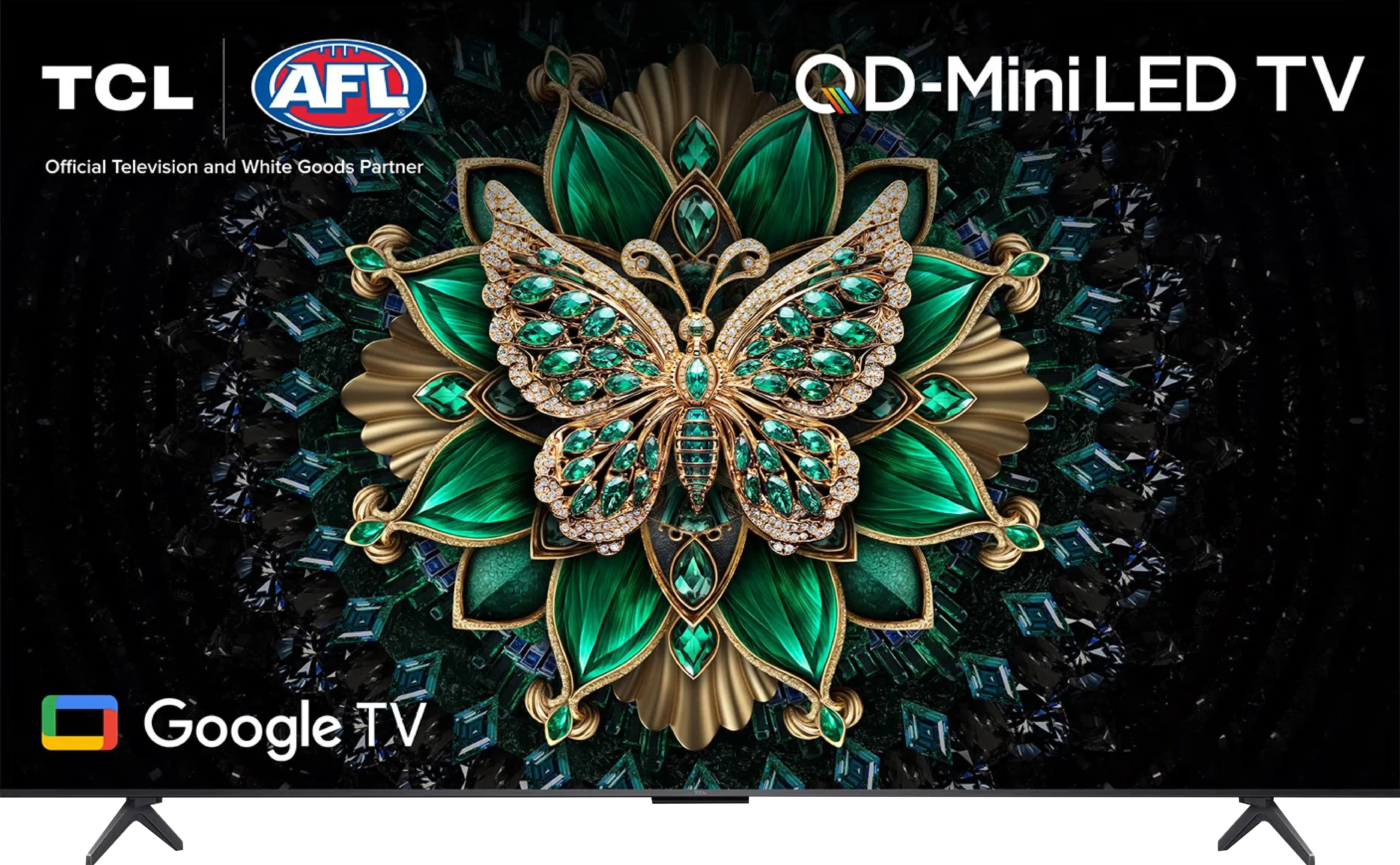
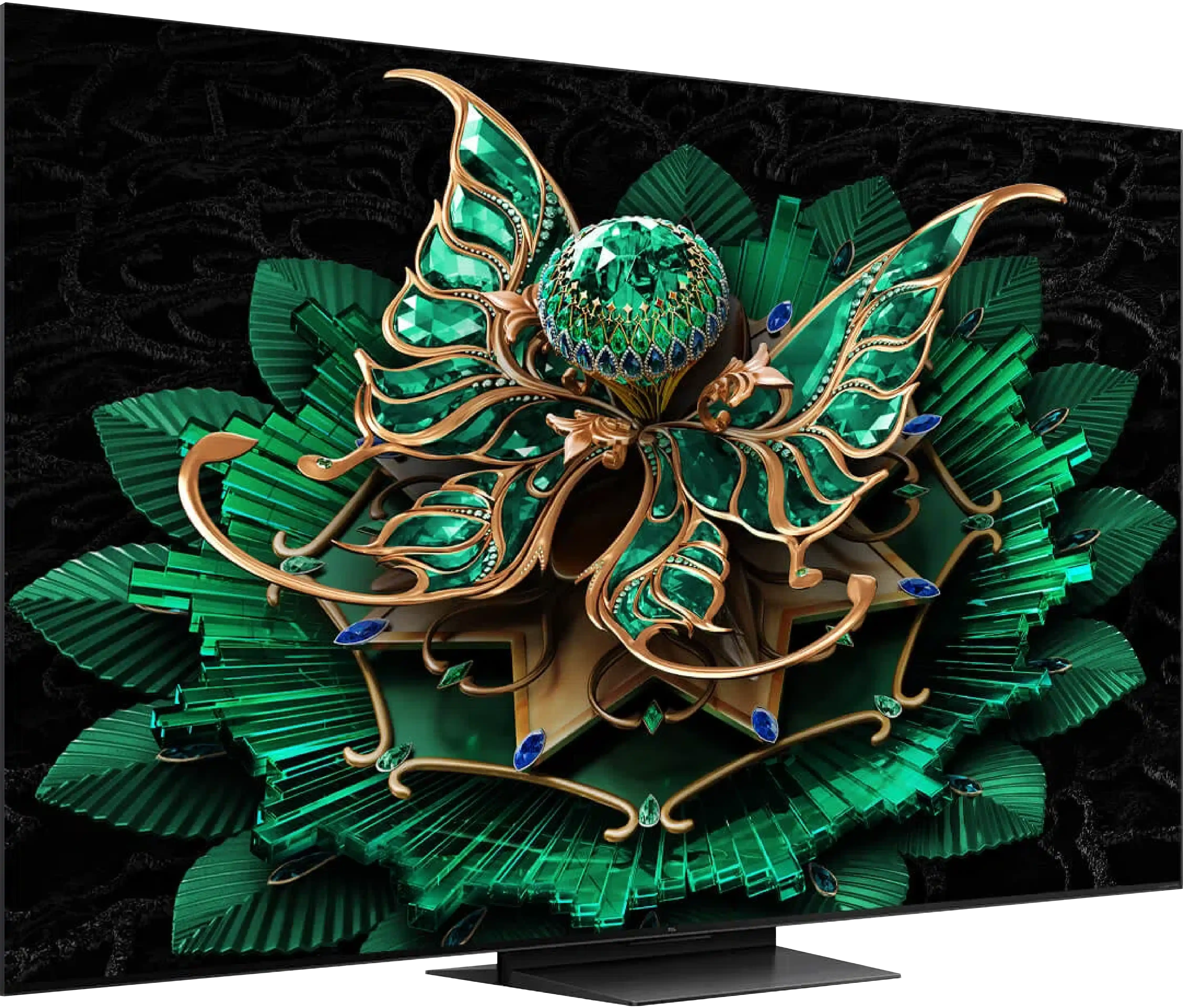
Panel type: LCD VA
Resolution: 3840x2160
System: Google TV
Model year: 2025
Complete the survey to find out the result

Panel type: LCD VA
Resolution: 3840x2160
System: Google TV
Model year: 2025
Complete the survey to find out the result

Overall rating
7.1
7.2
Movies and series in UHD quality
6.7
6.7
Classic TV, YouTube
6.6
6.5
Sports broadcasts (TV and apps)
6.3
6.6
Gaming on console
8.4
8.5
TV as a computer monitor
8.6
8.4
Watching in bright light
6.4
6.1
Utility functions
7.0
7.3
Apps
9.6
9.6
Sound quality
6.5
7.0
Complete the survey to find out what fits your preferences
Advantages
Very good contrast and black levels: VA panel and MINI-LED backlighting
Good motion smoothness: High refresh rate of 144Hz
Decent panel brightness
Many features for gamers: VRR, ALLM, HDMI 2.1, HGiG
Additional mode for PC gamers: 240Hz
GoogleTV system with a wide selection of apps
Support for multiple HDR formats including Dolby Vision
Support for Dolby Atmos and DTS
Very attractive price
Very good black - VA panel with a large number of Mini-LED zones
High brightness in HDR - over 1000 nits
Great for gamers - HDMI 2.1, low input lag, VRR, ALLM etc.
Good motion fluidity - 144Hz panel
Support for multiple HDR formats: HDR10, HDR10+, Dolby Vision
Google TV operating system with access to a huge app base
Pleasant sound from built-in speakers
Disadvantages
Management of the backlighting could be better
Language errors in the system
Google TV can have minor stutters
No USB recording and PiP function
Our verdict
There are TVs that come for testing, and you immediately think: "oh, just another average one, probably like many others." And essentially... that's true. The TCL C7K doesn't try to dethrone OLEDs, nor does it scream "revolution!" from the box. And yet, after a few days of testing, it's hard not to think: "wow, this is really good gear." And that's exactly what the C7K is. The biggest advantage of the C7K is the decent picture at a reasonable price – MiniLED and quantum dots do their job here. The colours are vibrant, the brightness is satisfactory, the contrast impresses, and with the right settings, you can truly enjoy viewing in the best quality. The second strong point is motion smoothness – both in sports and gaming. Support for HDMI 2.1, variable refresh rate, 144 Hz, and a whole heap of other features makes gaming on this TV a pure pleasure. On top of that, there's Google TV, which – despite some minor shortcomings – offers access to almost an endless library of apps. Voice control, quick access to YouTube, Netflix, AirPlay support – it has everything you need for daily use. Are there downsides? Of course. The Google TV system can have moments of "hesitation," and MiniLED – like any MiniLED – can stumble on very challenging movie scenes. But these are details. After all, the C7K is a mid-range model – and in this class, it performs remarkably well. So if you’re looking for a reasonably priced, modern TV with Google TV that looks good, works well, and sounds pretty decent without breaking the bank – the TCL C7K definitely deserves your attention.
TV appearance
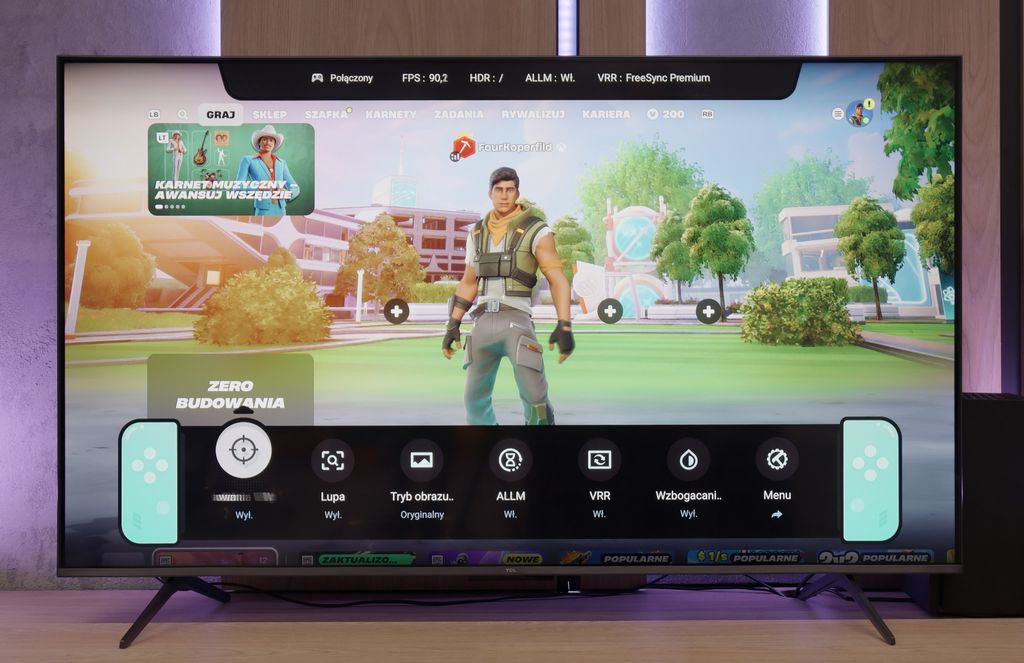
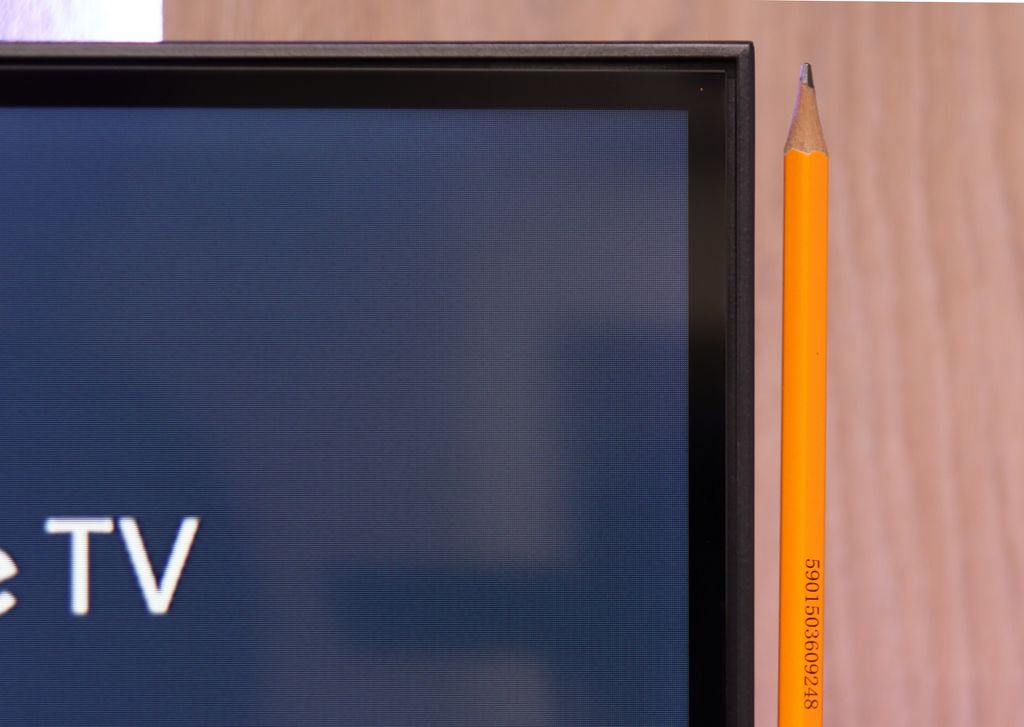
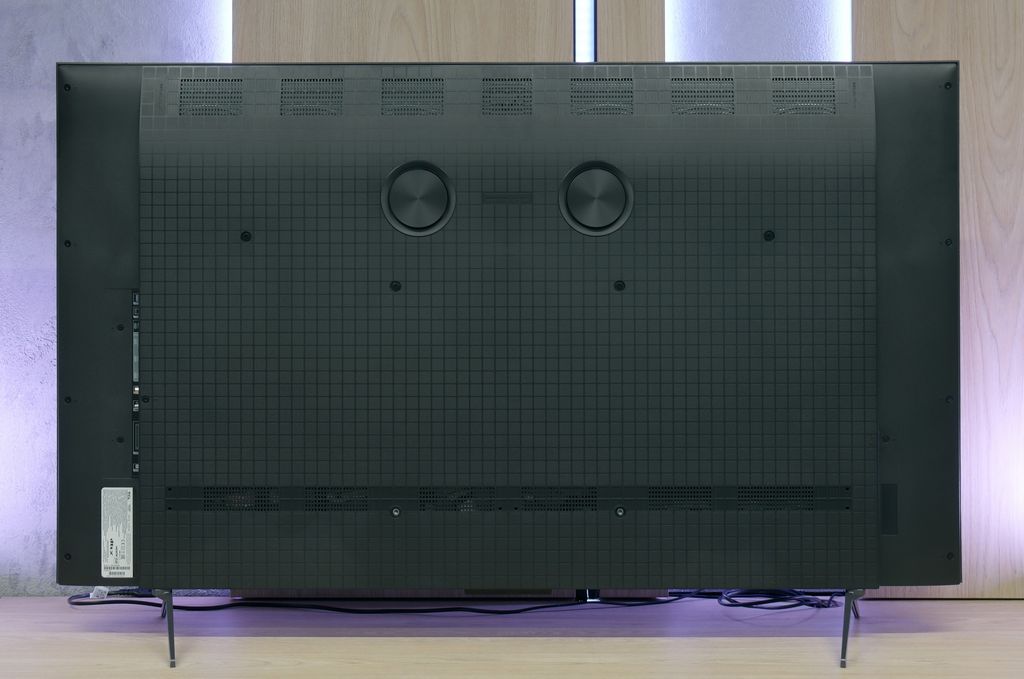
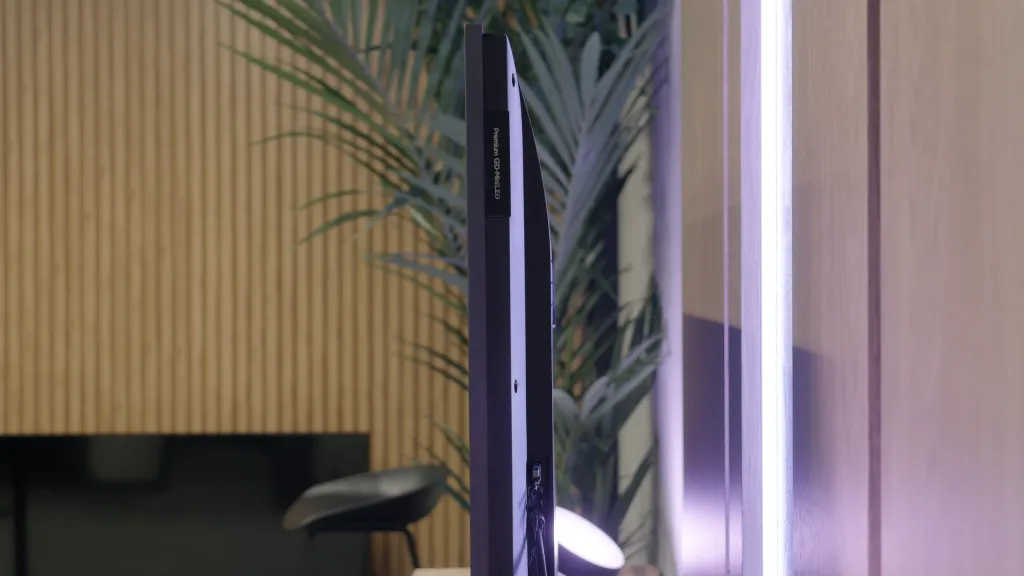
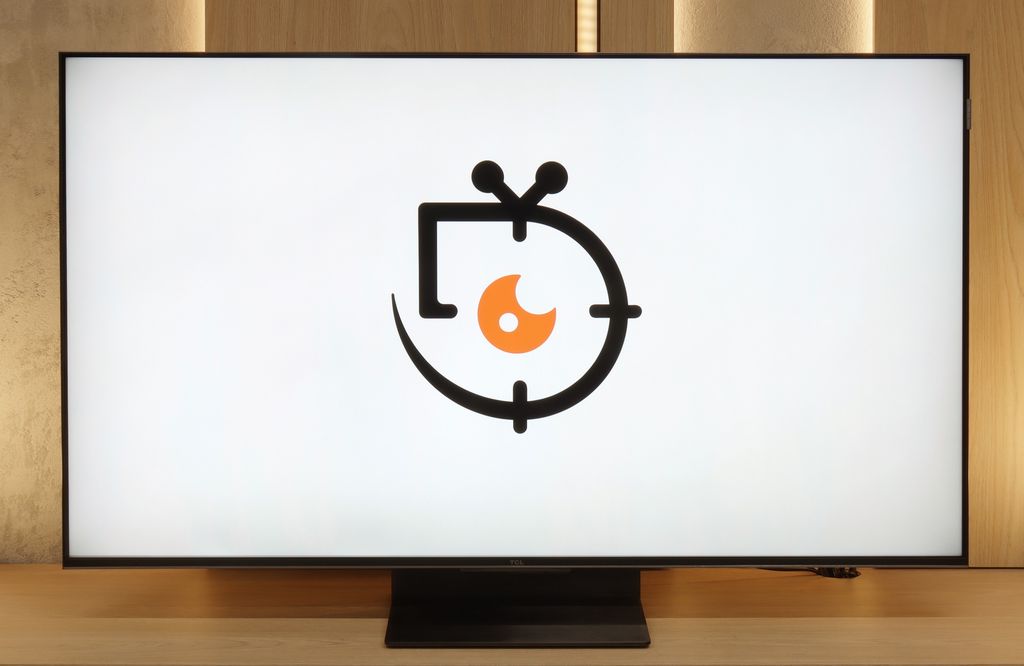
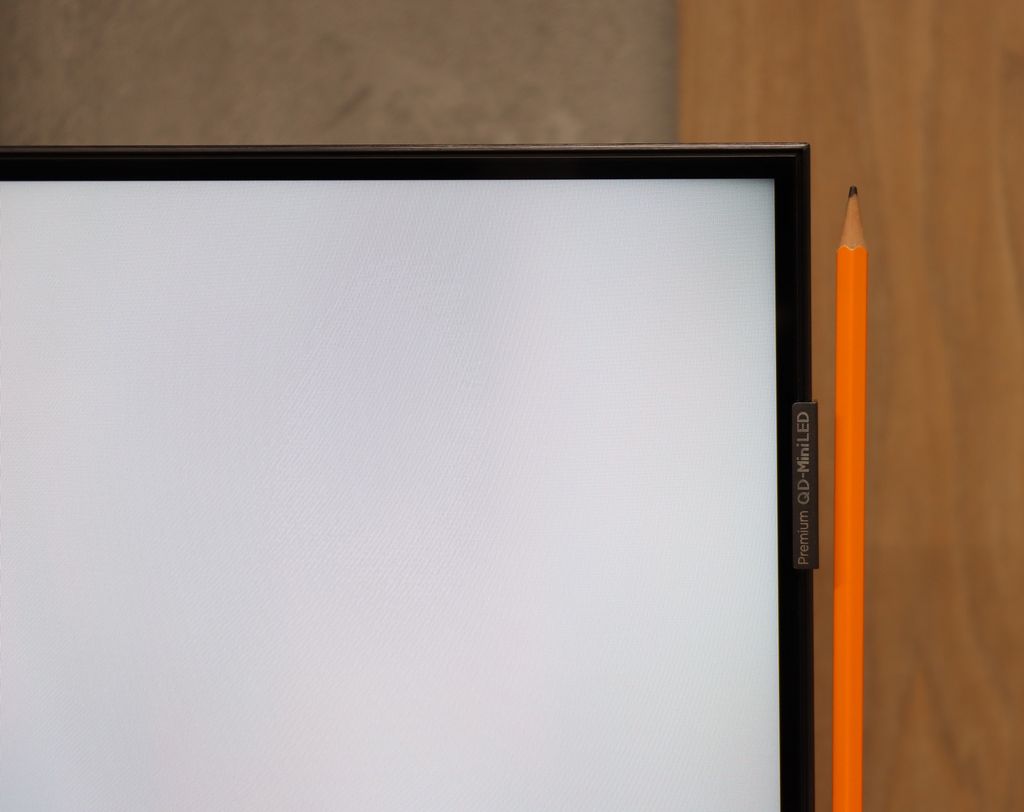
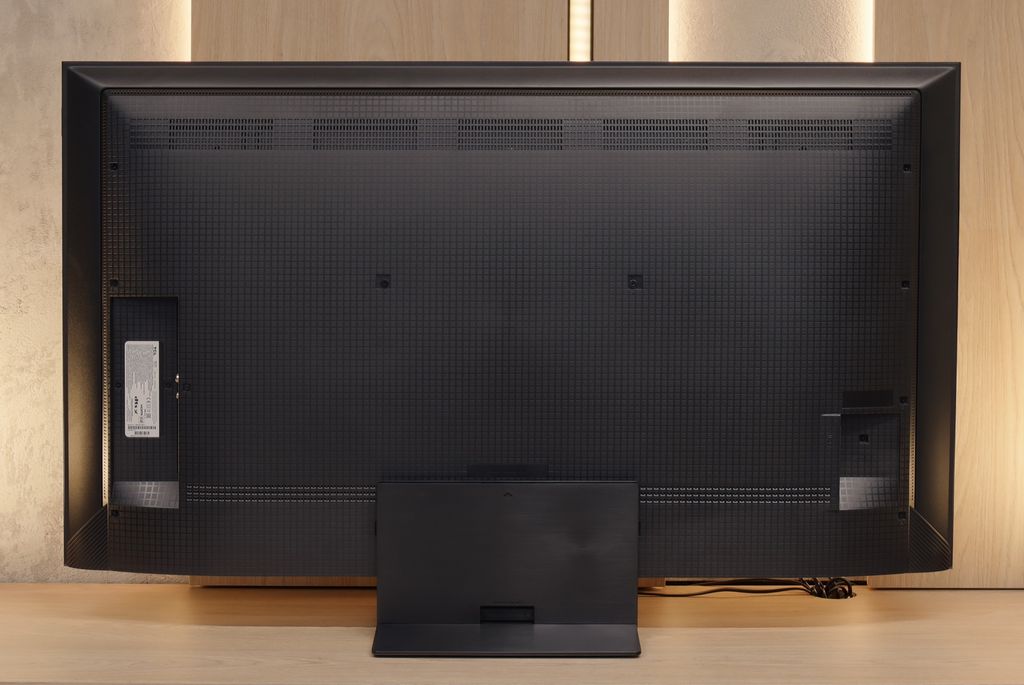
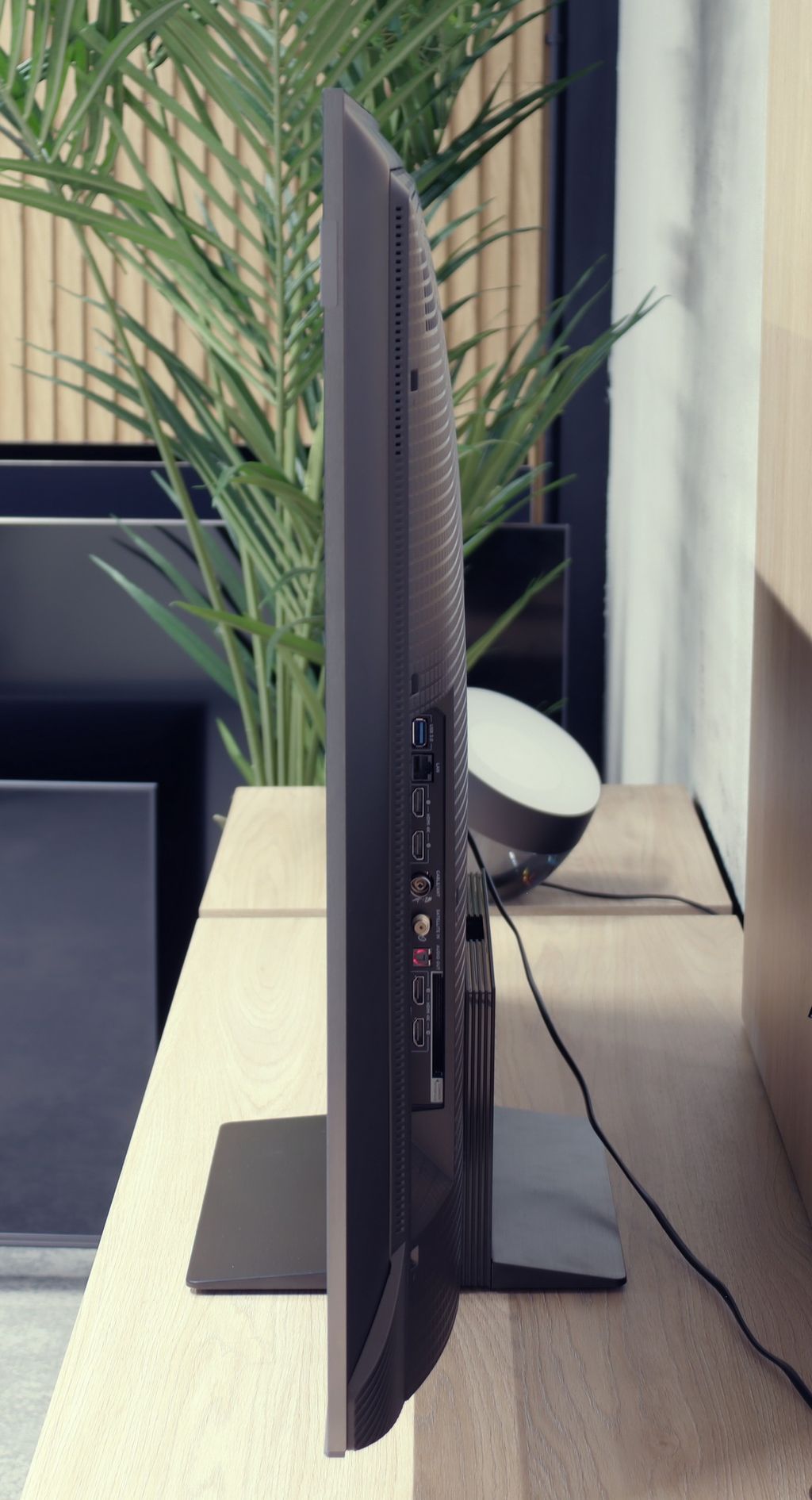
Contrast and black detail
7.3/10
7.1/10
Local dimming function: Yes, number of zones: 180 (10 x 18)
Local dimming function: Yes, number of zones: 336 (14 x 24)
Contrast:

Result
114,000:1

Result
17,300:1

Result
16,200:1

Result
9,900:1

Result
4,850:1

Result
161,000:1

Result
18,750:1

Result
13,150:1

Result
6,300:1

Result
4,200:1
Halo effect and black detail visibility:
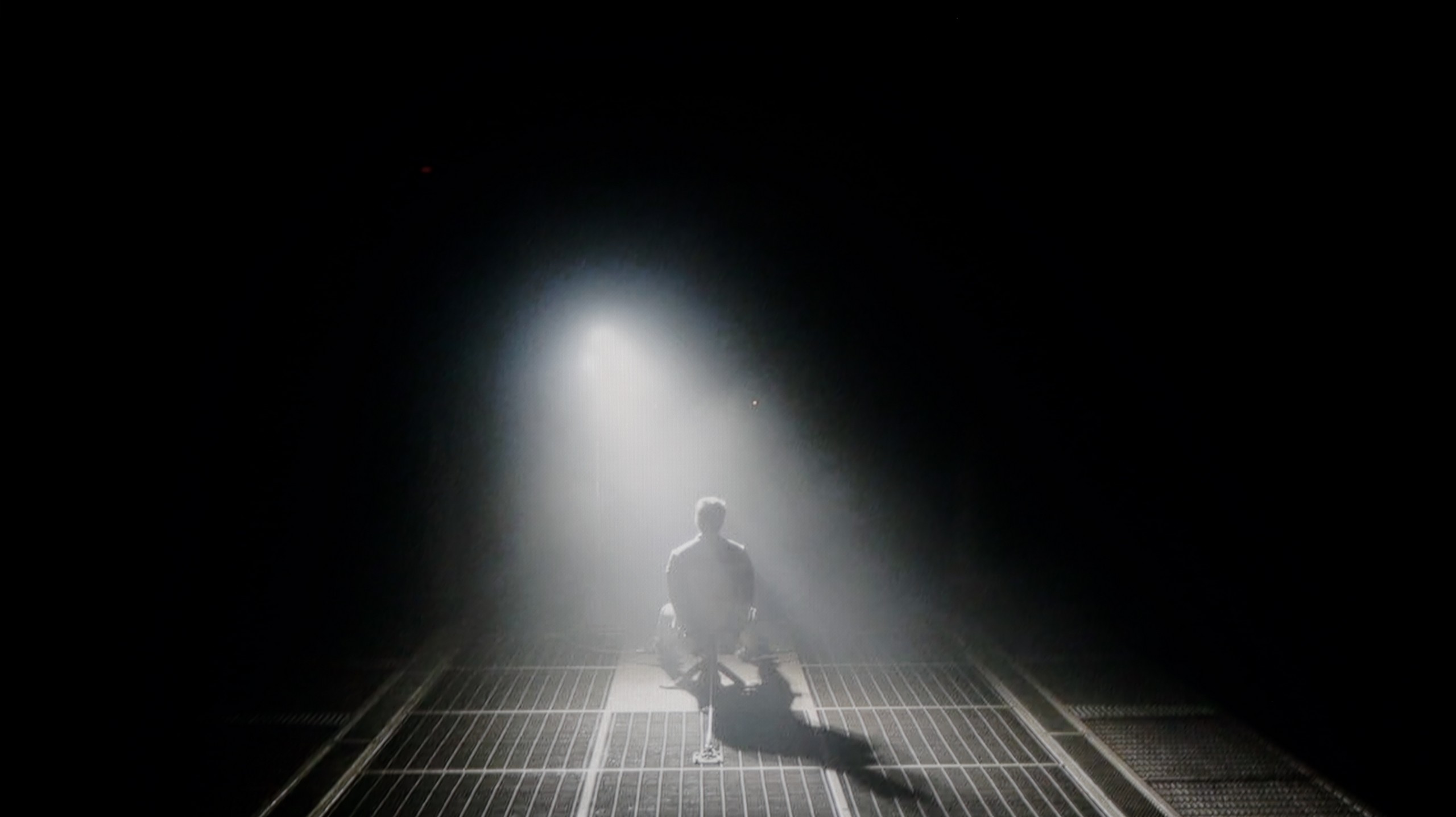
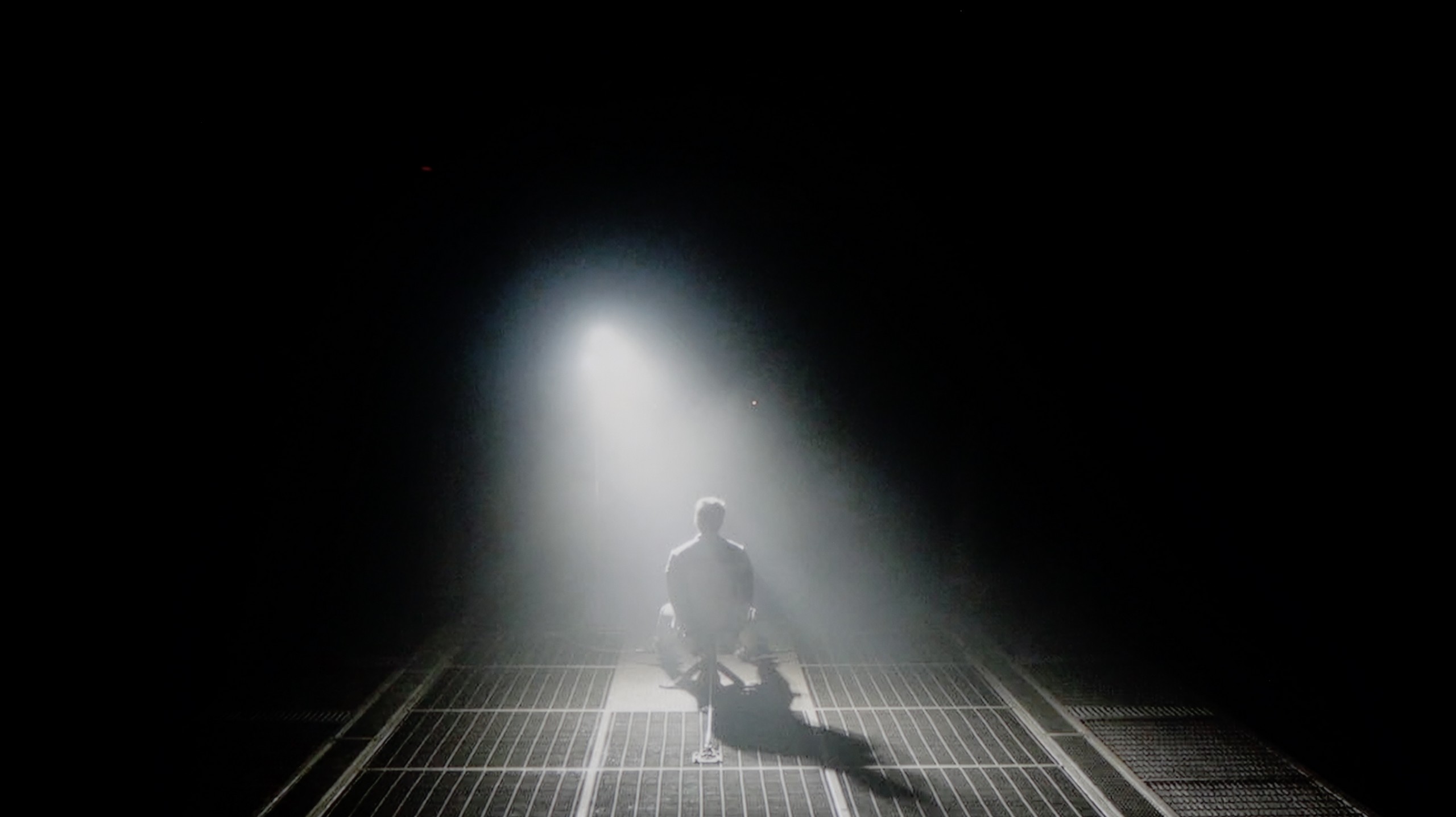
The TCL C6K is based on a VA panel, specifically an HVA produced by TCL CSOT, which already delivers a solid native contrast of 6000–7000:1 without the use of local dimming. However, the true strength of this model lies in its Mini-LED backlighting with the ability to dim individual zones. In the tested 55-inch version, we counted around 180 zones, and as the diagonal size increases, this number naturally grows. For a television in this price segment, the contrast is truly impressive. In simpler film scenes, such as segments from 'Oblivion', it looks fantastic, and shots completely filled with black make a great impression. Of course, due to the characteristics of Mini-LED technology, it's not always possible to avoid issues – in more challenging frames with many bright details, halo effects can appear, or some elements may be dimmed too strongly (regardless of local dimming settings). Nevertheless, the contrast can be regarded as a strong point of the C6K.
The 50-inch TCL C7K we tested surprised us right from the start – it's the smallest model in the series, yet it's equipped with a VA panel with MiniLED backlighting and – get this – as many as 336 dimming zones. By comparison, many far larger TVs from higher tiers would be happy to boast such a number. Here we have it in a 50-inch version. Sounds promising, right? So how does this translate into real viewing experiences? In the overwhelming majority of tested scenes – very well. The contrast was high enough that in measurements it reached even six-figure values, which in practice means very deep blacks and well-separated highlights. In scenes from films like The Revenant or Oblivion, the effect was impressive, matching the best LCD screens in this class.
Not everything, however, went perfectly. Despite the impressive number of zones, managing them wasn't always exemplary. In more complex scenes, where small light sources or a high level of detail appear, the TV had issues with the so-called halo effect (a glowing aura around bright objects) or overly aggressive dimming of the image. In such situations, contrast could either collapse due to overexposure of some zones or, conversely – details in bright areas vanished because the zones were suppressing light too much. Nevertheless, it's worth emphasising that in the vast majority of scenes the contrast was more than satisfactory. And considering the size of the TV and the price, the final effect will satisfy not only average users.
HDR effect quality
4.9/10
5.4/10
Luminance measurements in HDR:

Result
612 nit

Result
202 nit

Result
424 nit

Result
144 nit

Result
587 nit

Result
1051 nit

Result
185 nit

Result
454 nit

Result
200 nit

Result
836 nit
Scene from the movie “Pan” (about 2800 nits)


Scene from the movie “Billy Lynn” (about 1100 nits)


Static HDR10


Dynamic: Dolby Vision
Dynamic: Dolby Vision


HDR luminance chart:
TCL C7K / QM7K
HDR luminance
TCL C6K
HDR luminance
TCL C6K is a moderately bright television that can showcase its full capabilities in the best movie conditions – the maximum brightness is around 600 nits. In scenes with large, intense light sources, the HDR effect can be truly satisfying, providing a sense of cinematic sparkle. However, it's important to remember that with local dimming management, there are situations where some elements become dimmed, and sometimes even barely visible. It is clear that there is a lack of proper optimization of the algorithms, although looking at the technical parameters in this price range, the build quality performs very well.
TCL C7K is one of the brightest MiniLED TVs in its price class. Under optimal testing conditions, the screen can achieve over 1200 nits, resulting in impressive, at times dazzlingly bright scenes. And most importantly – this isn’t just a theory from measurements. In practice, even the brightest moments in movies can shine with true cinematic grandeur. Home HDR cinema fans should be really pleased.
The impression is fantastic, especially in scenes with large areas of brightness – a white sky, explosions, sun reflections, or magical sunsets can surprise with an intensity of light that rarely appears in this price range.
However, things get a bit worse when more challenging scenarios appear on the screen, previously described in terms of contrast – that is, images full of details, with small bright elements on a dark background. In such cases, the C7K often opts to preserve black at the expense of brightness. An example? Scenes from movies like Sicario 2 or Life of Pi, where small light sources (like a distant lantern) may become less visible, and details in the lights are simply dimmed or blend into the background.
For many viewers, this may be an acceptable compromise – as we achieve deep blacks and pleasant image depth. Nevertheless, it’s important to recognise that the visibility of small details in bright areas is not this model's strong suit. It’s simply a technological limitation that still exists – even with over 300 zones.
Factory color reproduction
5/10
6/10


Factory Mode
After calibration
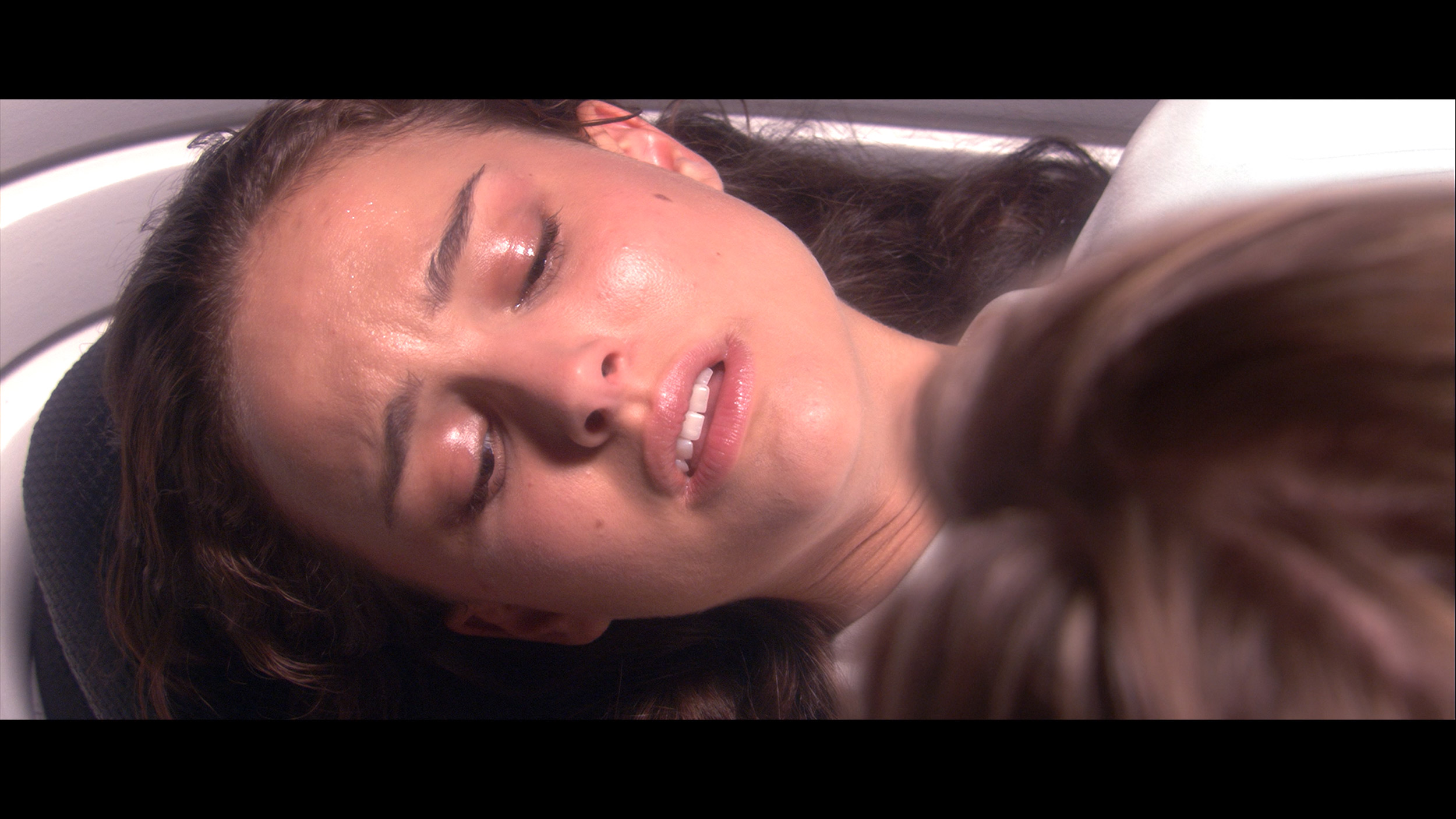
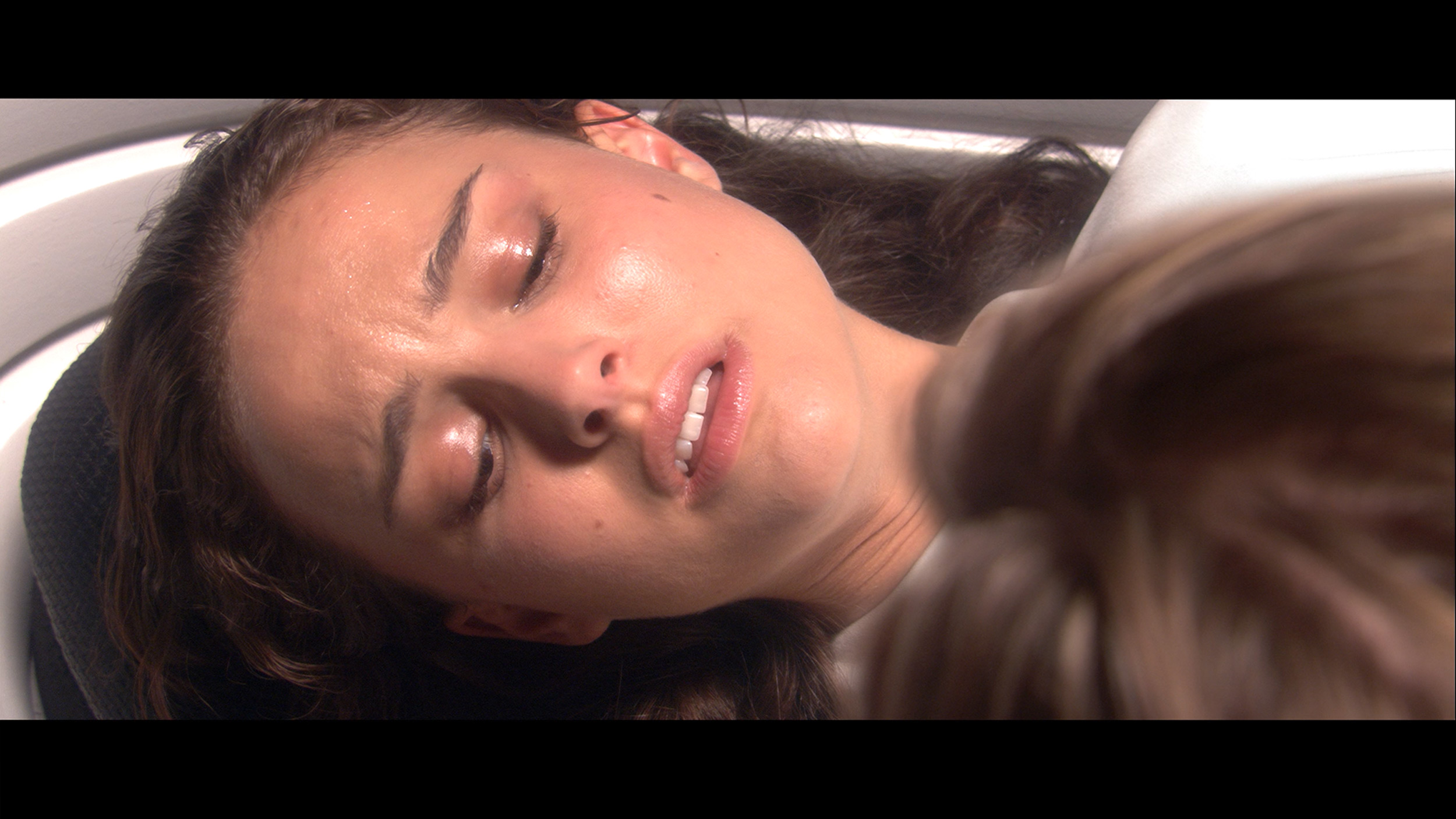
Factory Mode
After calibration
This year's TCL televisions have introduced the Filmmaker mode, and it must be said that it is definitely the best choice right out of the box. This is the mode we recommend for everyday viewing of movies and series. Unfortunately, as is often the case, the best does not mean perfect. In the case of SDR content, the image was too warm, as the red was quite prominent in the white balance. On the other hand, with HDR content, we had the opposite impression – the image became cooler than it should have been, due to an excess of blue. There is also the brightness characteristic, which at times led to overexposure. In practice, these issues combined resulted in quite noticeable errors in colour tests, which are hard to accept in a mode advertised as “by the creators”.
A new feature in TCL televisions for 2025 is the long-awaited Filmmaker mode, which until now has been found in most competing brands. This is great news, as this mode is considered the most faithful to the original vision of the creators and is often recommended by enthusiasts of quality visuals. Unfortunately – as is often the case – the mere presence of it does not guarantee perfection. The Filmmaker mode in the TCL C7K is not without its faults. There are issues with inaccurate white balance, particularly a slight blue tint that resulted in cool, somewhat greyish skin tones. But that wasn’t the biggest problem. The main complaint was excessive brightness exposure, which is clearly visible on gamma and EOTF charts. The image was simply too bright, at times even blown out, which affected not only the texture of scenes but also the overall viewing experience. Some details were just lost, and the entire image looked as if someone had overdone the brightness slider. As always, we decided to see what could be squeezed out of it after calibration. And this is where things started to get really interesting…
Color reproduction after calibration
7.5/10
7.5/10




Thanks to the white balance adjustment, we were able to significantly reduce the C6K's tendency to distort colours, which resulted in a very good end result. After calibration, we won't observe the effect of excessive warming of scenes in SDR or overly cooling the image in HDR. However, it is worth taking a closer look at the brightness characteristics. In SDR content, it's hard to have major objections – the picture looks really good, especially in older movies, TV shows, or material from YouTube. It performs significantly worse with HDR content. An analysis of the EOTF curve suggests that everything is fine, but in practice (EOTF in movies), the limitations of the construction become apparent. The television tends to excessively brighten the smallest fragments of the frame, and in other situations, it can overly dim the entire scene. The effect of calibration is therefore noticeable, and regarding colourimetry, the C6K has really gained a lot, but certain limitations resulting from local dimming and actually from its management by the C6K simply cannot be overlooked.
After calibration, the TCL C7K showed itself in a really good light, especially when it comes to SDR content. We managed to precisely tune the white balance, colour gamut, and brightness characteristics so that the colour errors on the ColorChecker palette fell below a value of 2. For the uninitiated – this is nearly a perfect result, which means that the image is very close to what the creators intended. Unfortunately, it was a different story with 4K HDR content. While we were able to slightly calm down the white balance and correct its earlier errors, it was still evident that the TV has some "MiniLED traits", particularly in brightness management. When we checked how the C7K handled the EOTF curve on real film scenes, rather than just on synthetic test patterns, it turned out that the screen still had a tendency to slightly brighten the entire image. This affects the overall experience – the black loses some depth, and the image becomes less contrasty than it should be. Despite these minor issues with HDR content, the overall reception of materials – especially in SDR – is really very good. After calibration, the C7K can display an image that can successfully compete with much more expensive models. Good colour tuning, natural skin tones, and pleasant brightness make movie watching and everyday content viewing more than satisfactory.
Smoothness of tonal transitions
9.5/10
8.6/10





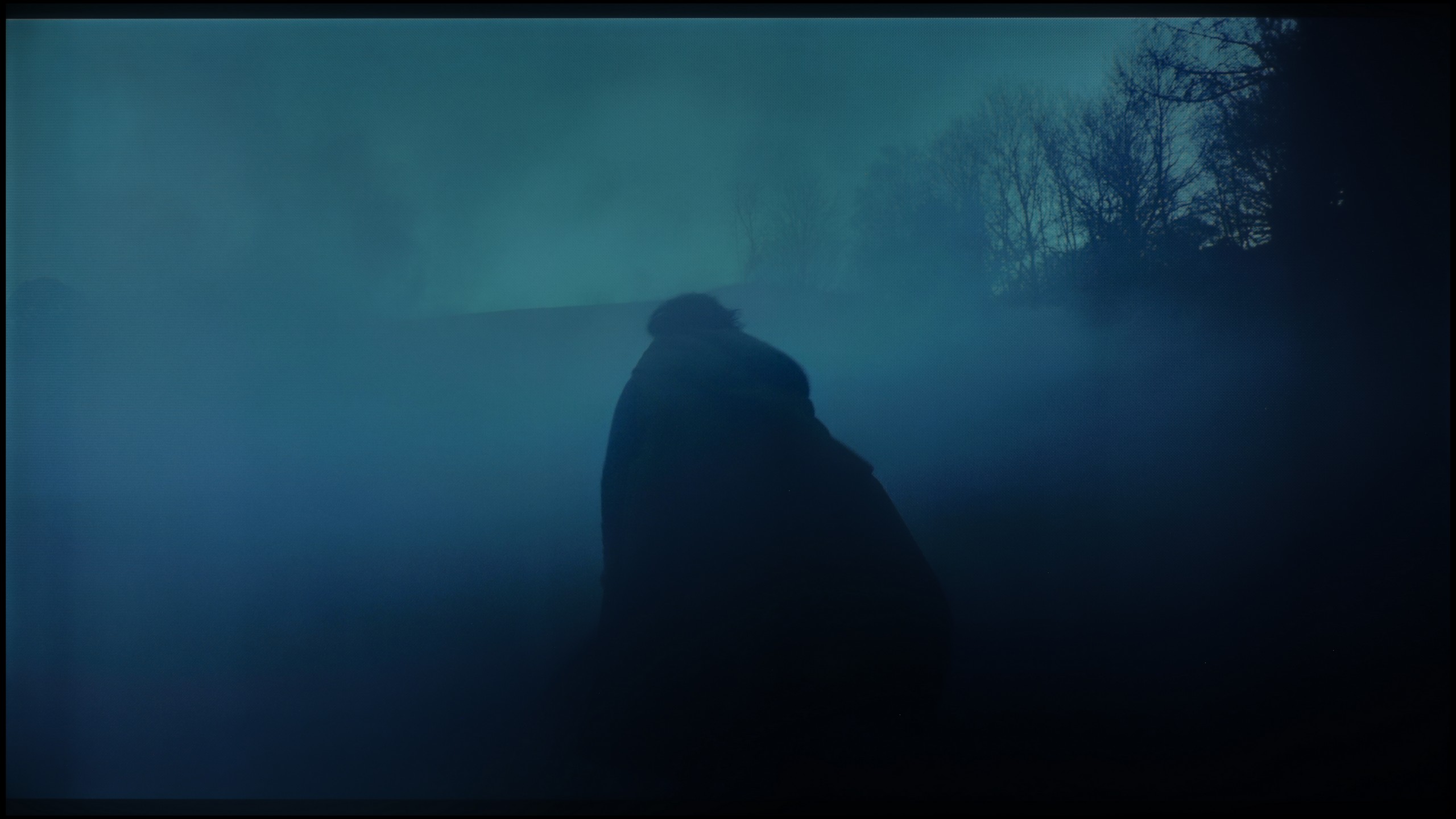






The transitions between colours in the C6K are very smooth, and it’s hard to nitpick any banding. The image looks natural, and any minor imperfections can only be noticed on bright test patterns – and only with really careful viewing. In everyday use, the effect is simply fantastic, and it’s safe to say that in this category, the C6K performs outstandingly.
The TCL C7K performs very well with colour gradation – in most of the scenes tested, tonal transitions were smooth, and colours blended together without visible outlines or the artificial effect of "blotches". In everyday use, it's hard to find any faults – the picture looks natural, without jarring transitions or digital artifacts. Certain limitations only appear in very dark tones – especially in a heavily muted grey palette, where the television may struggle to reproduce the ideal gradation. But that’s absolutely understandable, as even many significantly more expensive models in this range simply can't cope. Fortunately, these situations are rare and don’t really affect the overall perception.
Image scaling and smoothness of tonal transitions
5/10
5.5/10
Smooth transition function
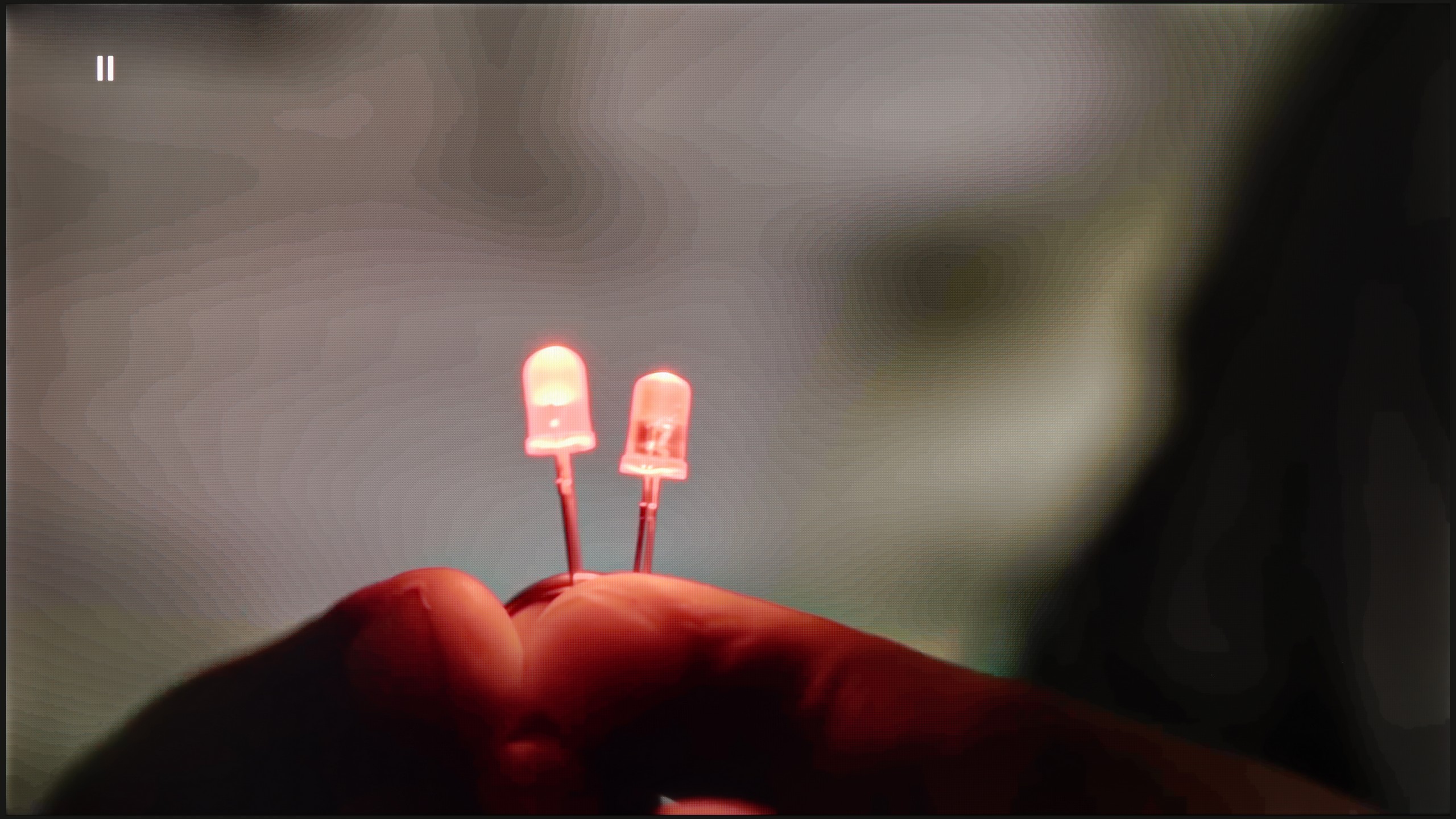
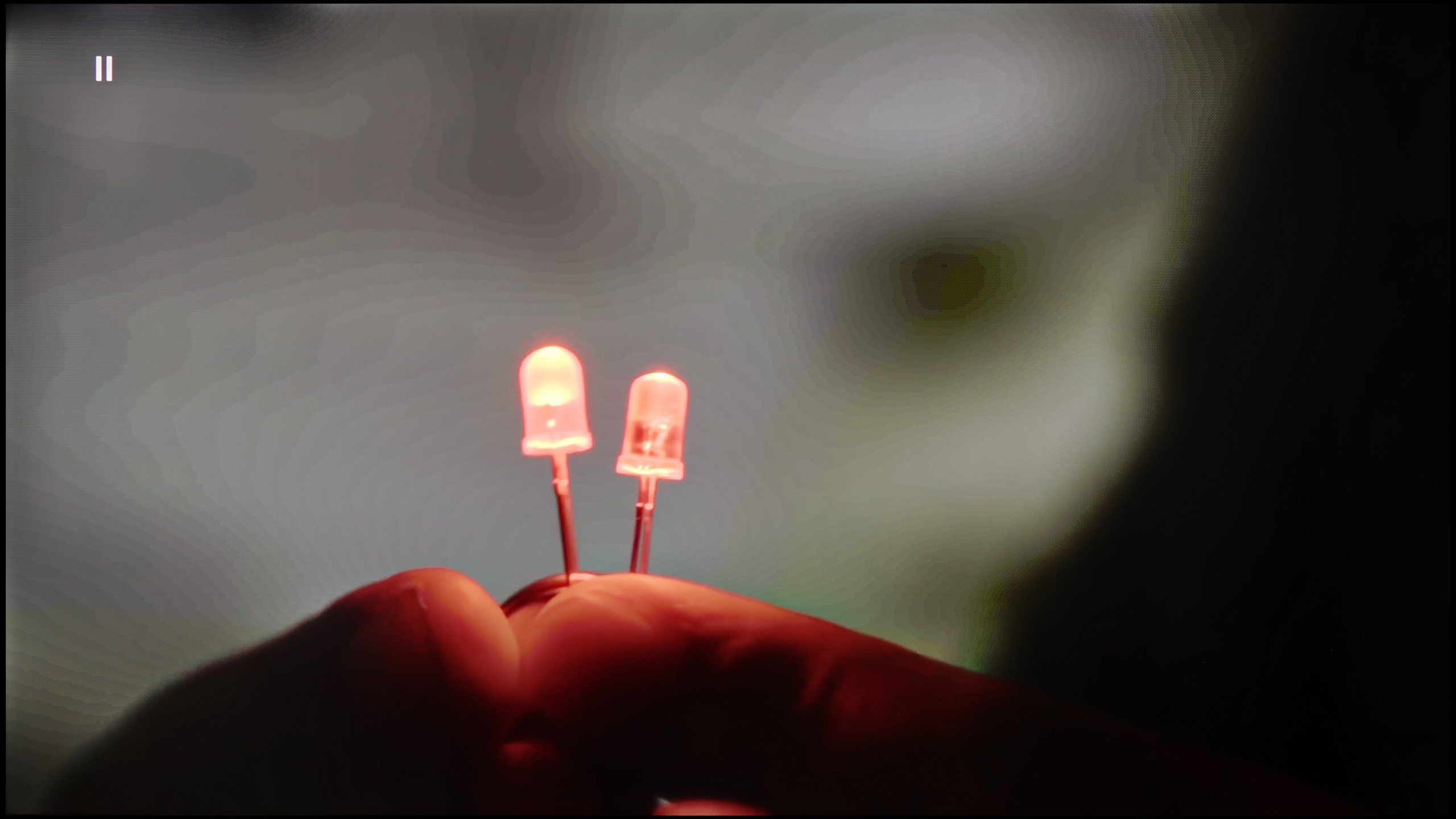
Image without overscan on the SD signal


TCL C6K performs quite well in terms of upscaling. Lower quality materials appear acceptable, and the absence of overscan issues means the image is displayed in full, without cropping. However, one cannot expect miracles – very low quality content won't come to life here, as the image processor has its limitations. On thin lines or details, there is characteristic tearing visible, which indicates a lack of advanced image enhancement algorithms. It is also a shame that the C6K lacks the function of smoothing tonal transitions – in older films or video materials, colour banding can be noticeable and may be distracting during longer viewing sessions.
TCL C7K has a feature that, according to the manufacturer, is meant to smooth out undesirable colour transitions – something like a rescue for less successful tonal shifts. It's called "Gradual Smoothing," and... well, it sounds ambitious, but in practice, it works very poorly. Regardless of whether we set it to low or high, the difference is minimal. Worse still – the feature can cut out elements from the image that should remain. Fortunately, film grain remains untouched, so at least it doesn't smooth everything indiscriminately, but even so – it's better to simply turn this option off.
When it comes to upscaling lower resolution content, it's already better. SD and HD materials look quite decent, although at times we had the impression that the image loses sharpness and becomes too soft – as if something took away its clarity. Fortunately, with very low sources (e.g., 576p), there was no overscan effect, meaning the image wasn't artificially cropped – everything fit on the screen as it should.
Blur and motion smoothness
7.3/10
8.1/10
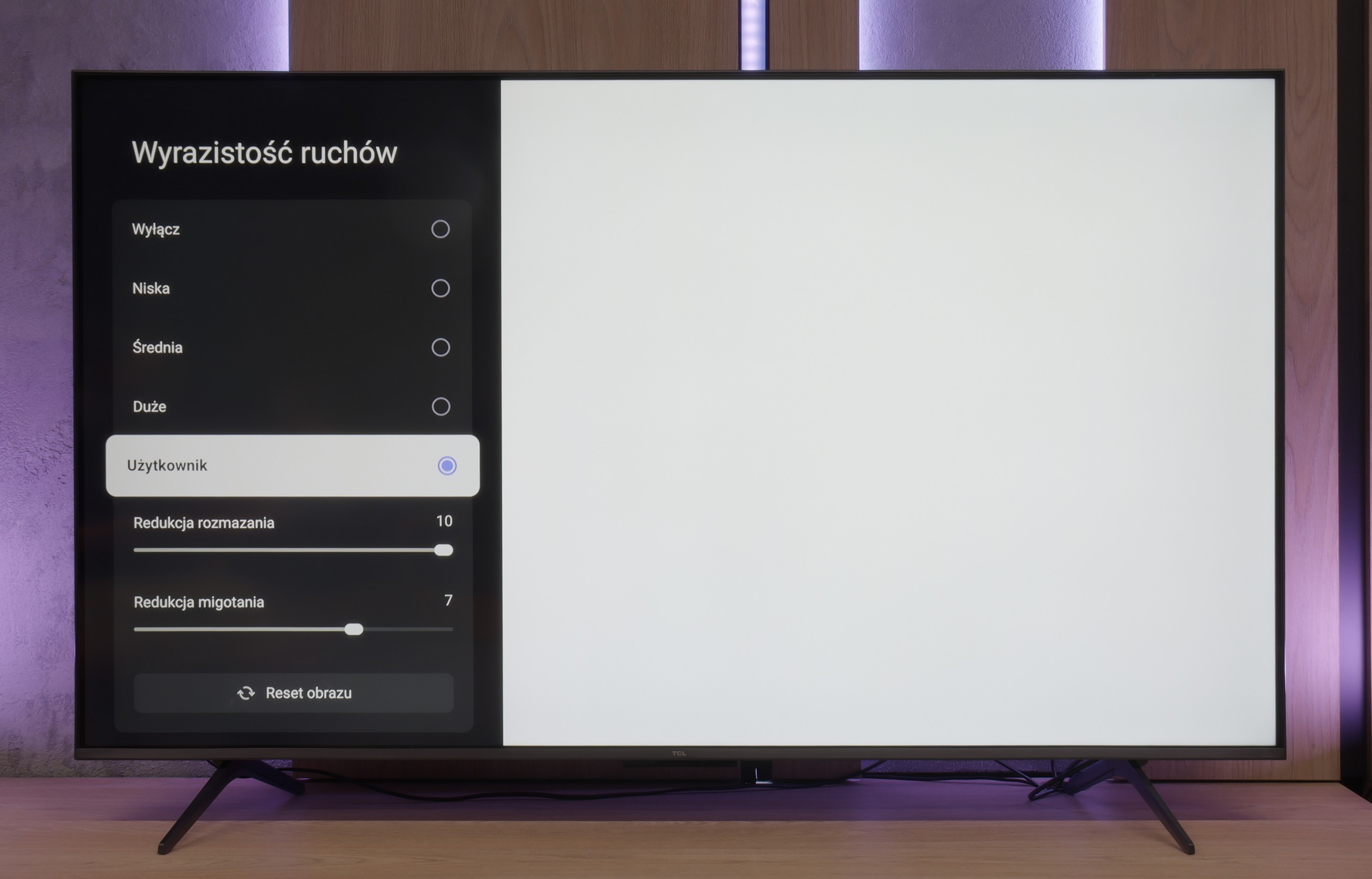
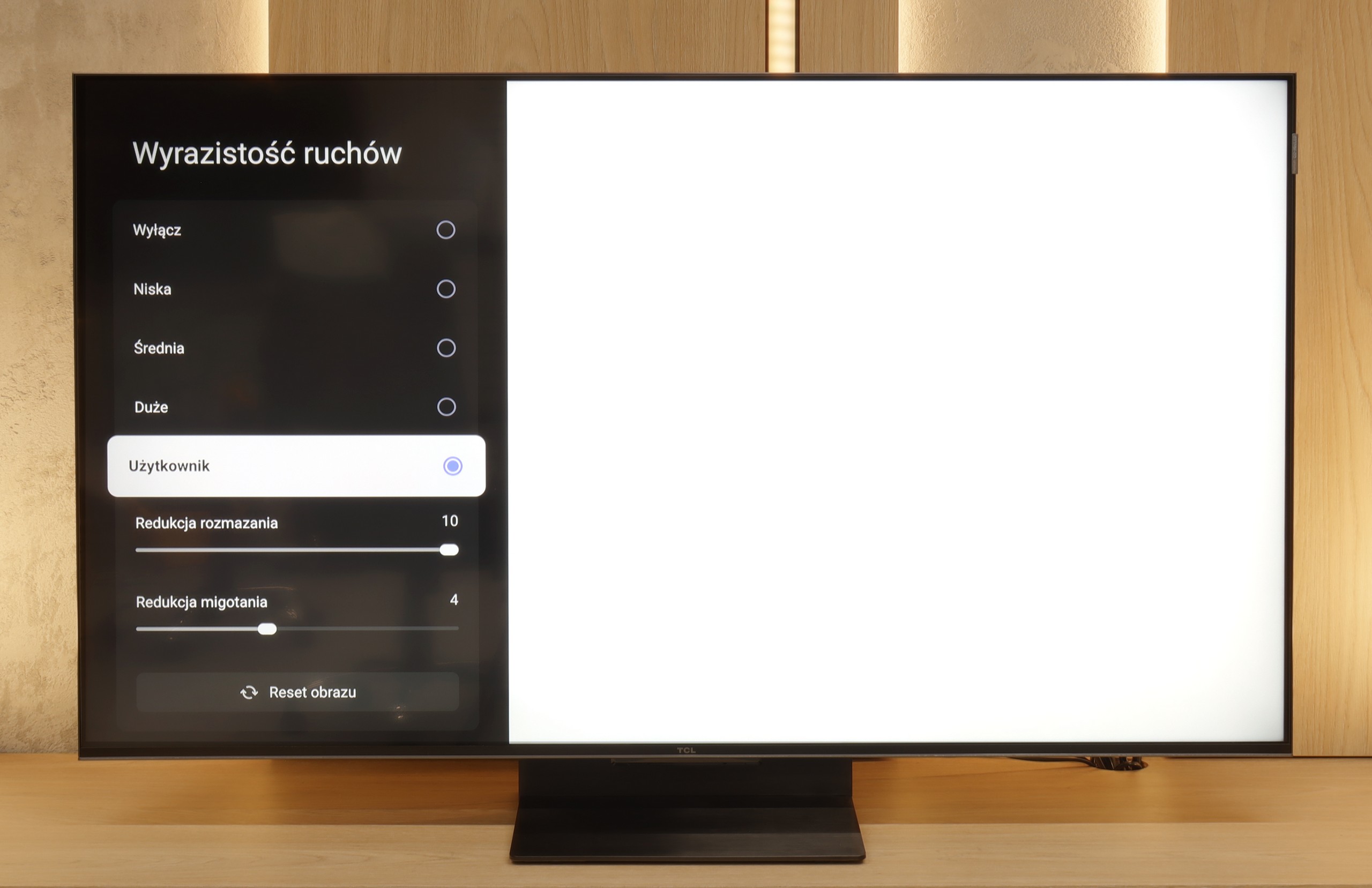
Blur (native resolution, maximum refresh rate):





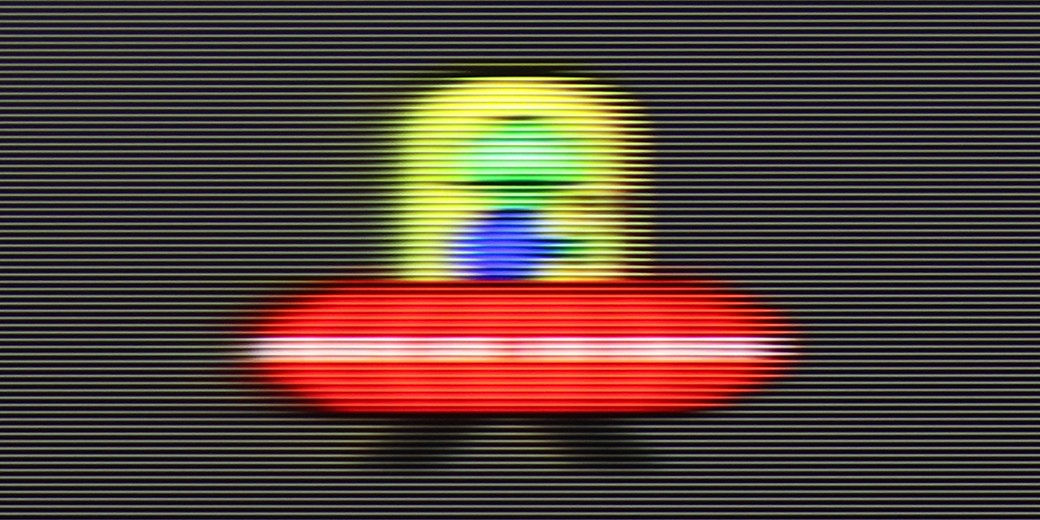
Blur (BFI function enabled):






Smużenie ():
Smużenie (4K 144Hz):



TCL C6K uses a 144 Hz panel, which is a significant advantage in this price range. It's an important step forward in comparison to the previous model C655 PRO, which only offered 60 Hz in 4K. The difference is especially noticeable when watching sports or playing games – the ball, players, or fast action in the game are displayed more clearly and without losing detail. An interesting fact is the panel's ability to operate at 240 Hz, which the manufacturer doesn't mention in official materials. We will return to this topic when discussing the PC gaming mode.
TCL has also added a feature for movie watchers: "Motion Clarity," which allows users to adjust the image according to their preferences with two simple sliders. You can either keep the visible film frame or opt for a very smooth, almost theatrical effect. This way, everyone can find settings that match their taste.
TCL C7K handles motion fluidity really well. The panel it uses offers a refresh rate of 144 Hz, which suggests that this TV is more than just a standard "60 Hz" panel. Furthermore, if we connect the C7K to a computer and set the resolution to Full HD. But we will write more about this in the paragraph on gamers and PC compatibility. Returning to everyday use – both sports and movies look very good here. Thanks to the fast panel and the well-functioning motion smoother, the C7K is great for watching matches, but also for movie screenings. In the menu, we find two sliders – motion blur reduction and flicker reduction – that allow you to adjust the fluidity effect to your own preferences. At lower settings, we get a more cinematic effect, with slight judder. At higher settings – the image becomes more theatrical, fluid to the point of excess. Whatever your preference – everyone can set it their own way.
Console compatibility and gaming features
9.8/10
9.8/10
- ALLM
- VRR
- VRR range48 - 240Hz48 - 144Hz
- Dolby Vision Game Mode
- Correct implementation of HGIG
- 1080p@120Hz
- 1440p@120Hz
- 4K@120Hz
- Game bar
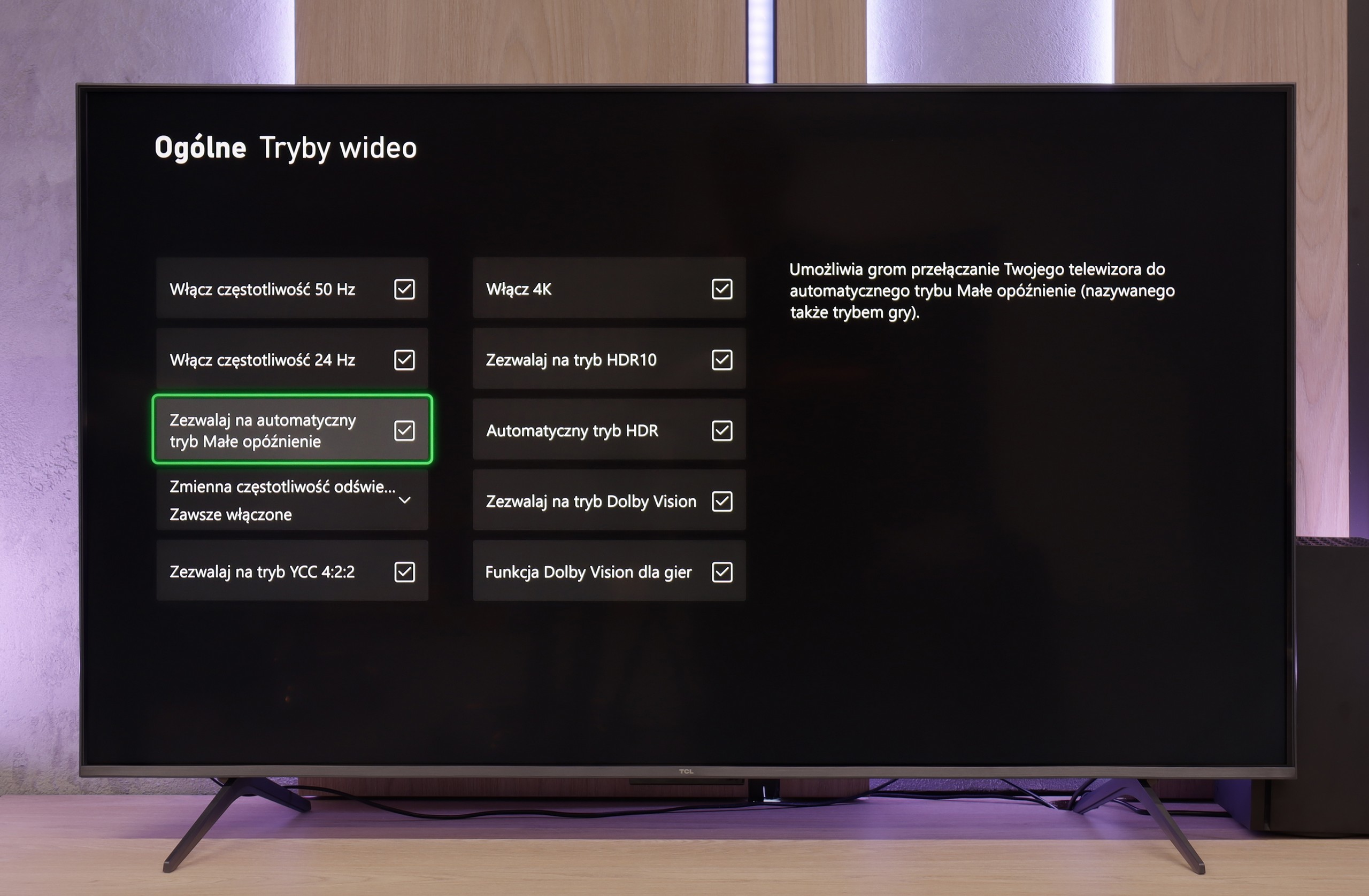
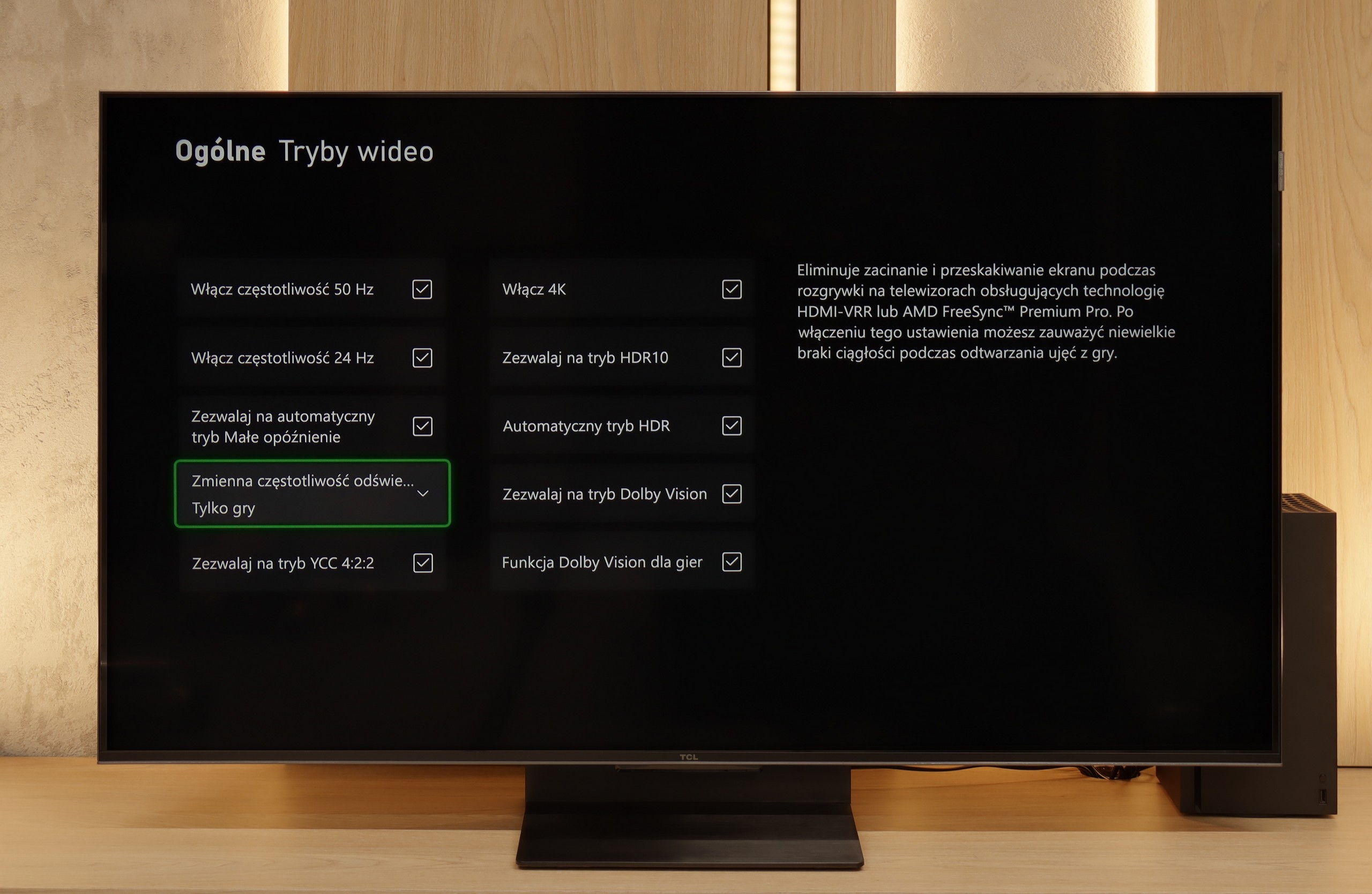
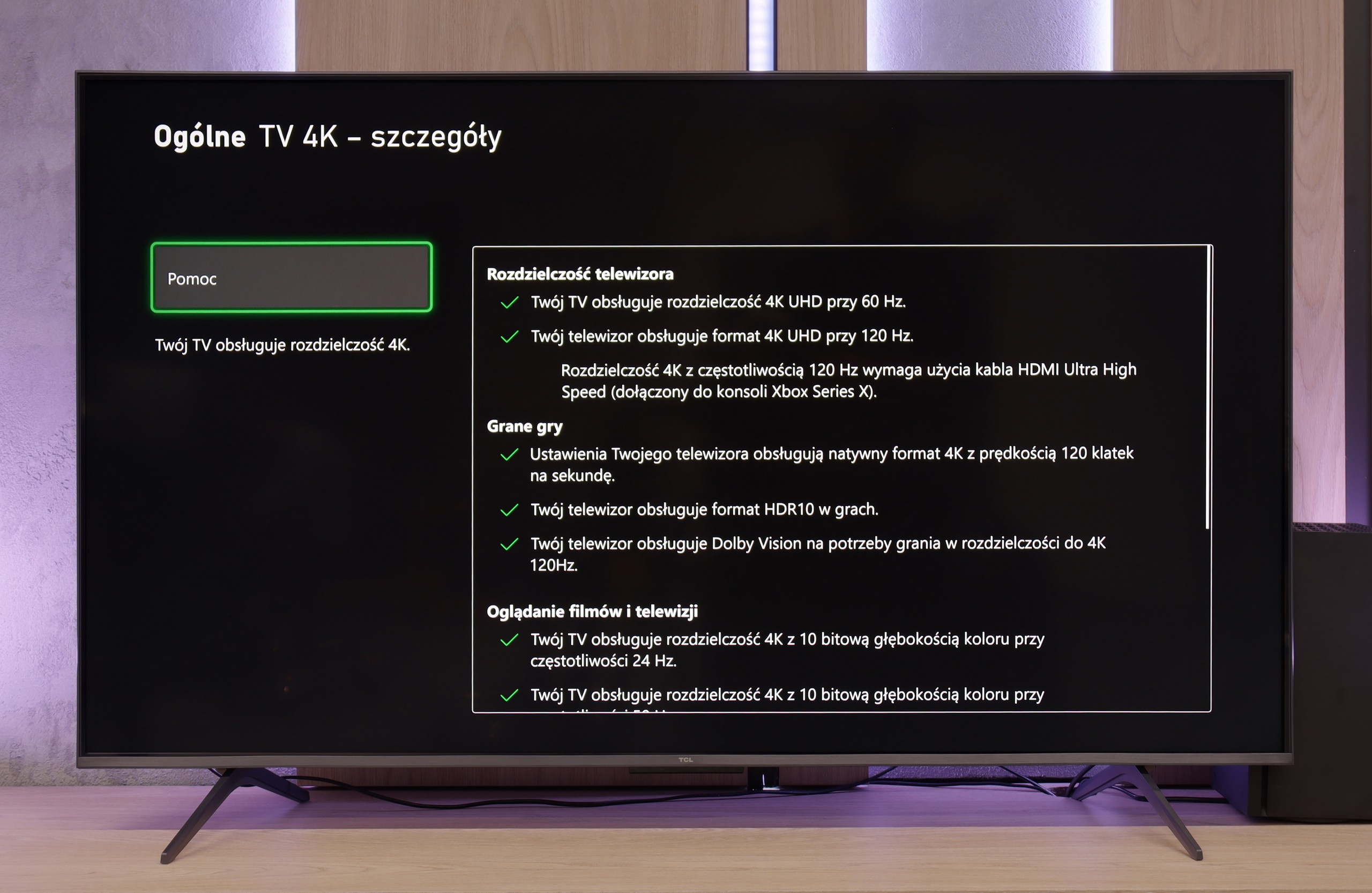
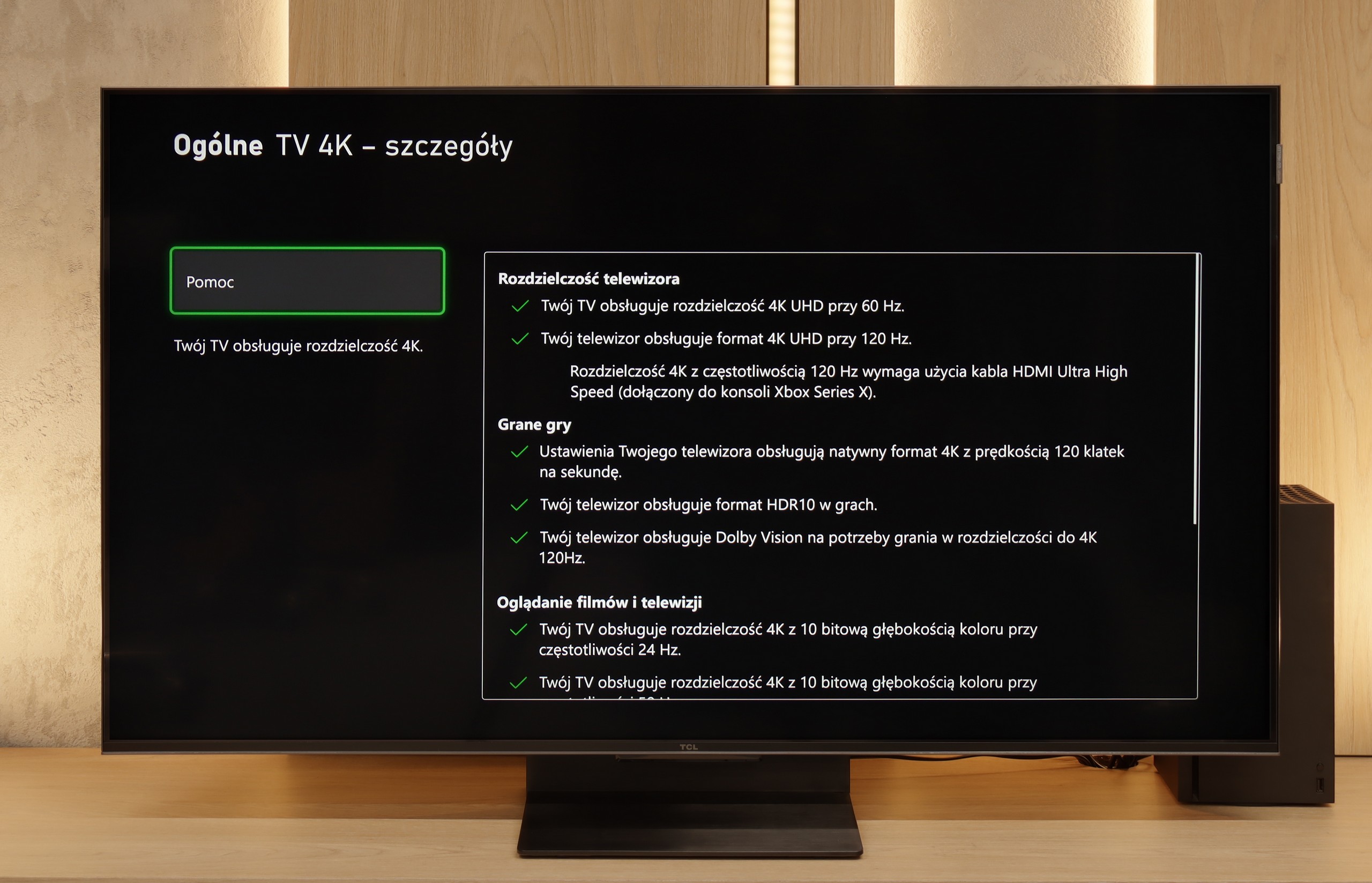
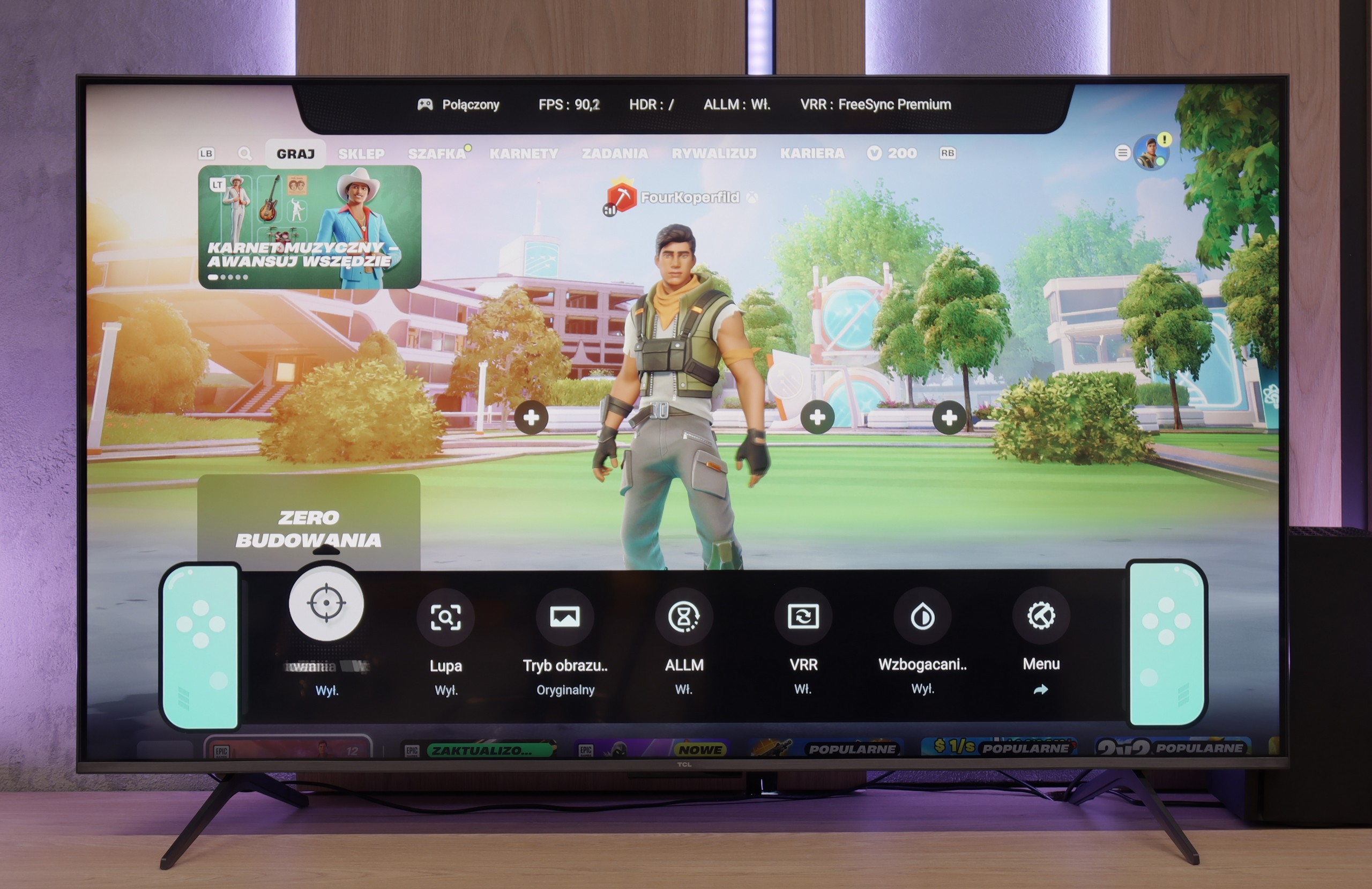
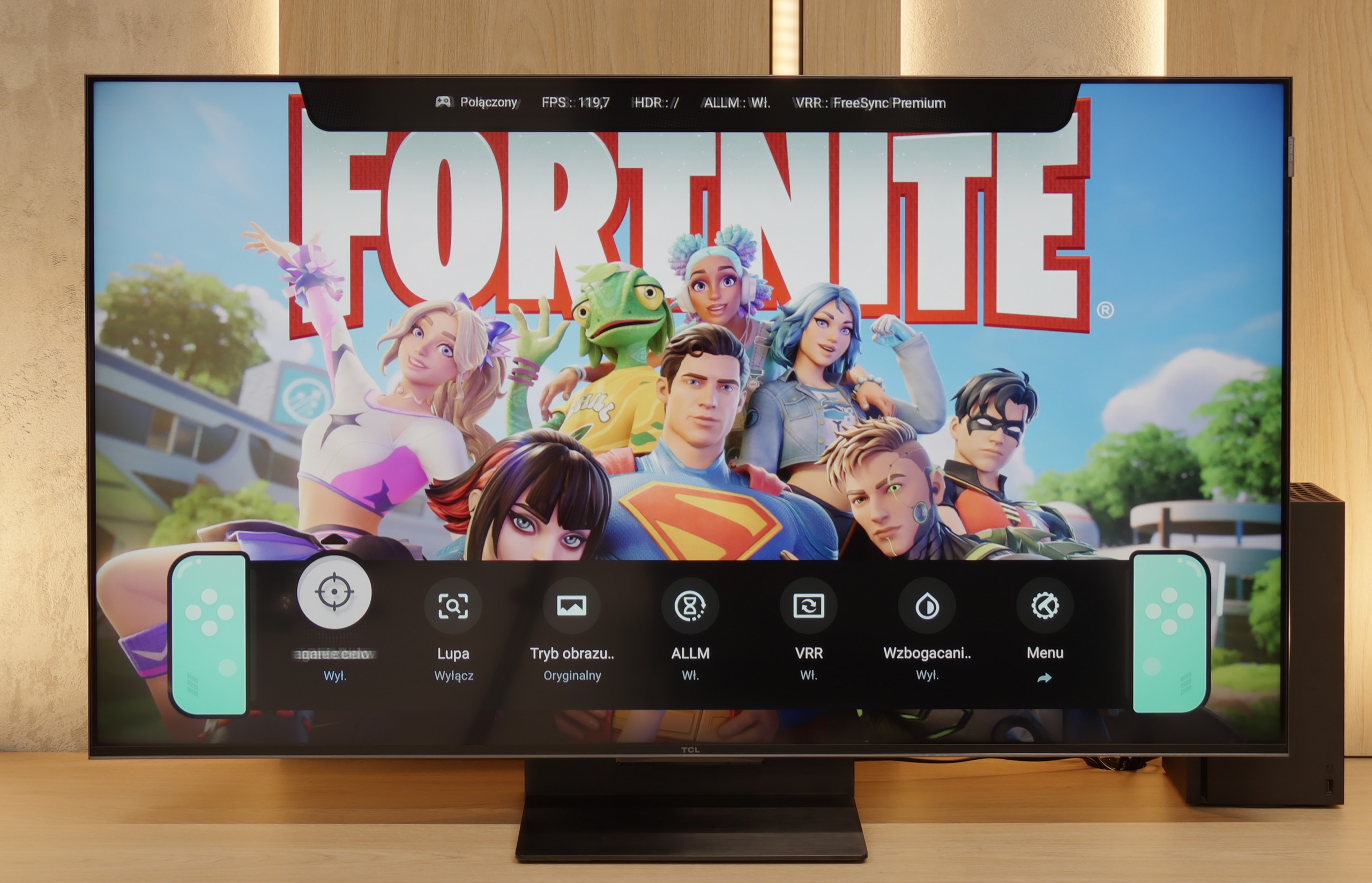
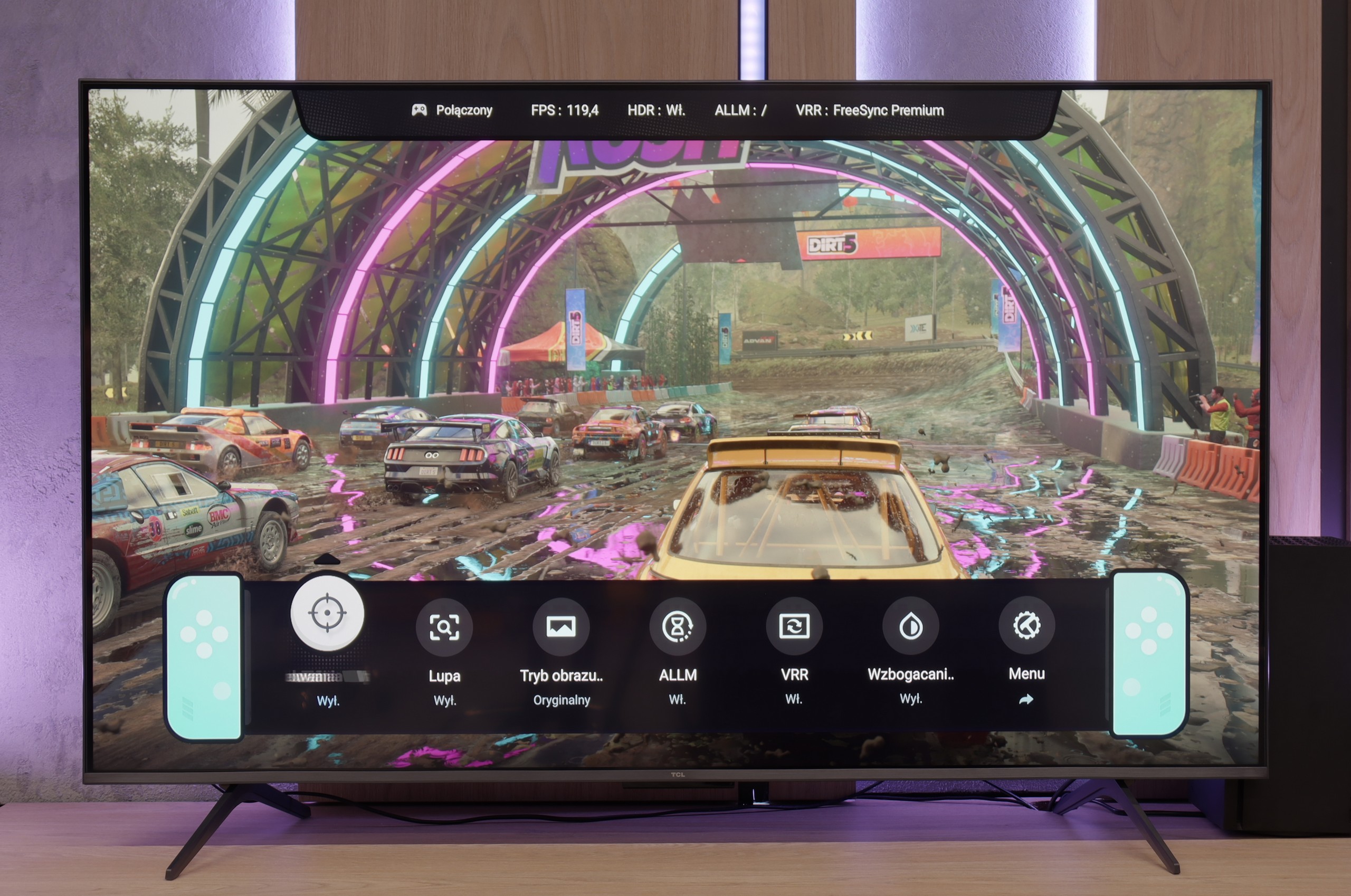
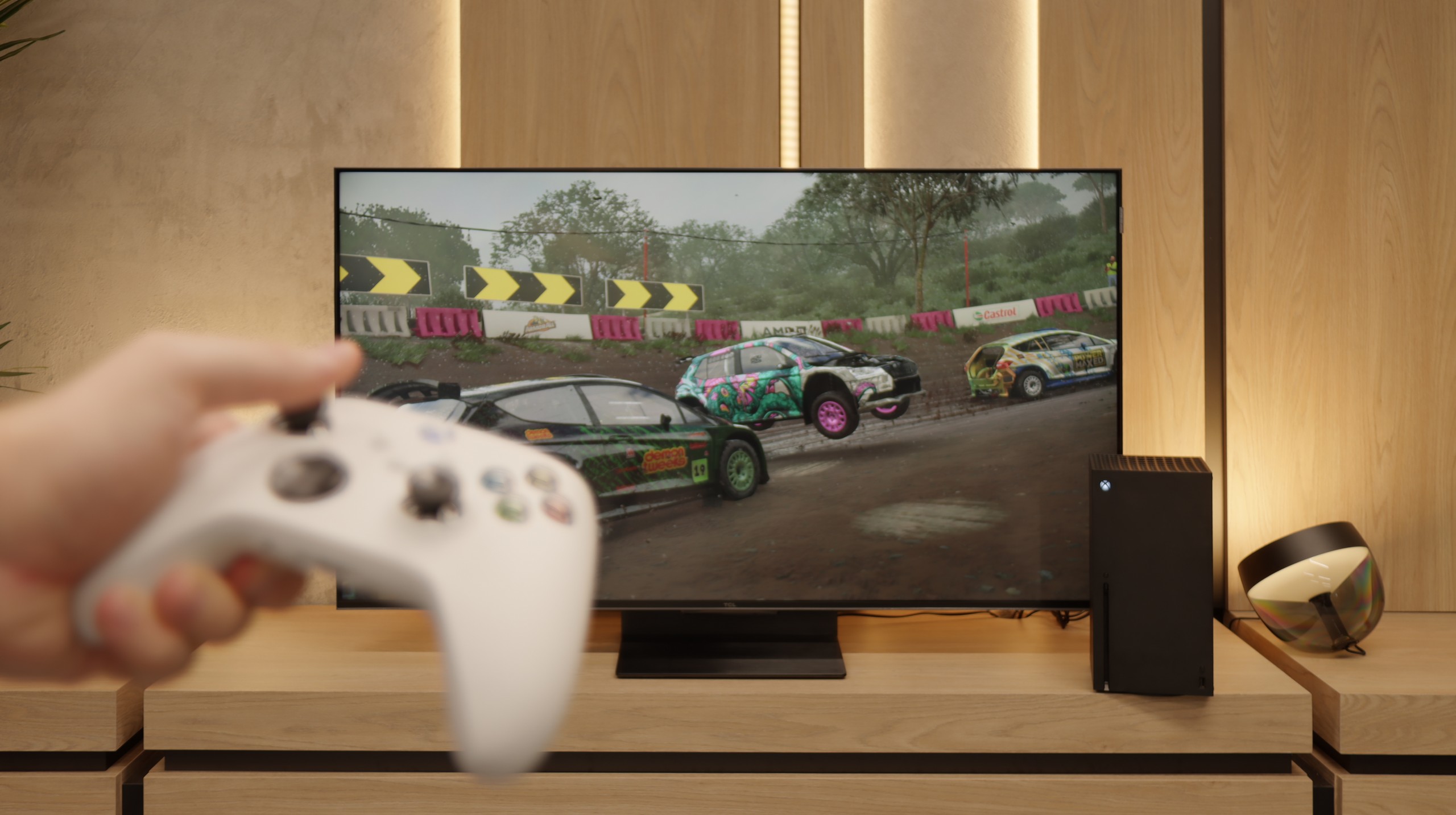
The TCL C6K is a television that can confidently be called equipment designed for gamers. We have 4K at 144 Hz, VRR support, an automatic gaming mode (ALLM), and Dolby Vision Gaming. On top of that, there's a practical Game Bar, which is a panel with the most important settings handy – useful when we want to quickly change something during gameplay (e.g. screen ratio: Yes, you can!). Notably, it has a wide range of VRR, reaching up to 240 Hz. However, this option is mainly for PC gamers who drop below the native 4K resolution. In that case, the television can spread its wings and show additional smoothness, especially in fast e-sport titles. For consoles, we stick with the classic limit of 120 Hz, but the possibilities are still quite broad. The only slight drawback is some minor motion blur that can occasionally be seen in dynamic scenes. Other than that, the C6K offers everything gamers expect from a television.
TCL C7K is a television that on paper looks like the perfect equipment for gamers – and most importantly, it performs well in practice too. Here's some good news: we have two full-bandwidth HDMI 2.1 ports, so we can easily connect both a console and a computer, using all their capabilities. The panel itself supports a refresh rate of 144 Hz, which provides a significant advantage in dynamic games. Additionally, it comes with a full set of gaming features: VRR (variable refresh rate), ALLM (automatic low latency mode), and support for Dolby Vision in games. There's also an HGiG mode that allows for HDR effects that align with the creators' intentions. GameBar, which is an information bar for gamers. It operates quickly, looks clear (like a Nintendo console👌), and shows what's most important: the current frame rate, VRR status, and even HDR parameters.
Input lag
9.7/10
9.7/10
SDR
HDR
Dolby Vision
In terms of input lag, the TCL C6K performs excellently. With 120 Hz content, the delay is around 10 ms, and at times even less. This is at a level where the response is practically instantaneous, and it’s hard to find any complaints. For 60 Hz materials, the result is around 18 ms – still a very good result, more than adequate for comfortable gaming.
When it comes to delays, the C7K gives no reasons to complain. In games at 120 Hz, the input lag is around 10 ms, which means that the TV responds really quickly. Interestingly, even in Dolby Vision mode, the result is very similar, which isn't always the case. Good job, TCL. At 60 Hz, the lag does increase a bit, but that's completely normal and applies to pretty much every TV with a refresh rate of 120Hz and above. The most important thing is that everything still runs smoothly and there's no feeling that something isn't responding to our actions.
Compatibility with PC
8.6/10
8.4/10
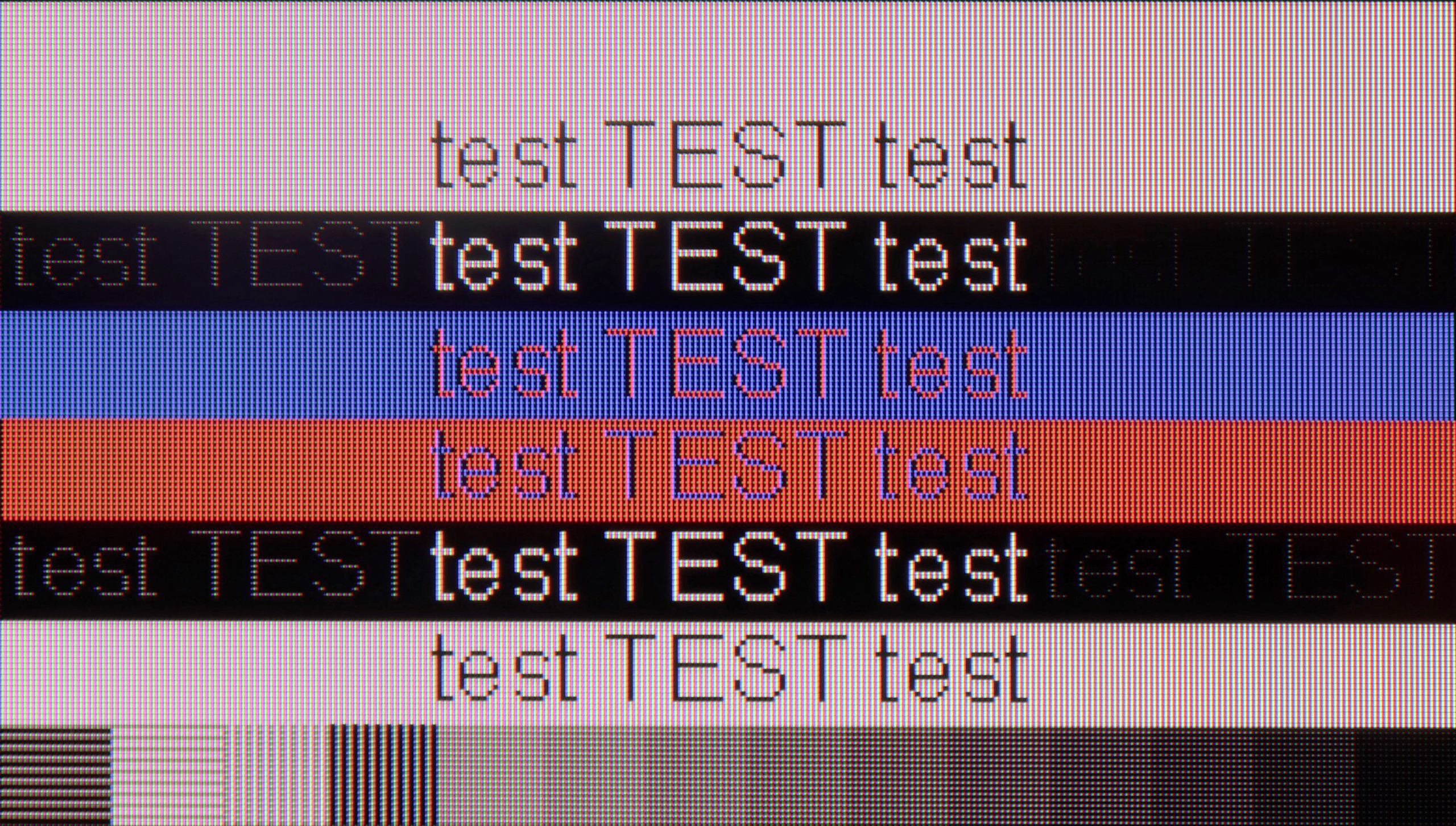
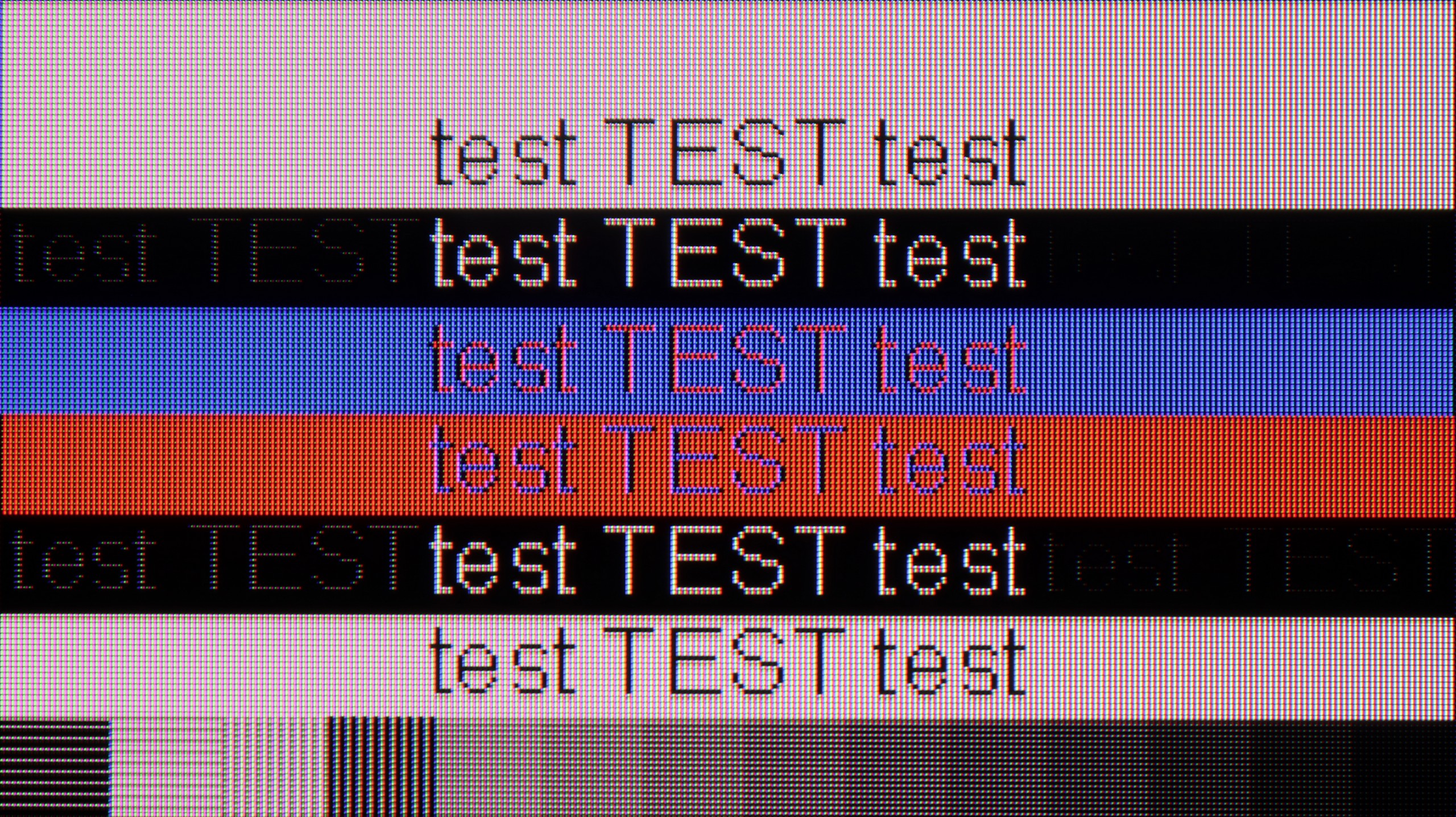
After connecting the TCL C6K to the computer, it performs excellently. At native resolution, we have 4K at 144 Hz, and if we lower the resolution, we can even achieve 240 Hz. Additionally, the TV works well with Nvidia and AMD cards – it supports both G-Sync and FreeSync. It’s also hard to fault for office work. Fonts are sharp and readable thanks to 4:4:4 chroma support, and any minor imperfections are so negligible that they're simply not noticeable in regular use.
If we plan to connect the C7K to a computer – especially for gaming – there's definitely a lot to play with. We have 4K at 144 Hz, which already sounds great, but if we drop the resolution, the TV can even display 280 Hz. In e-sports, where every split second counts, this really makes a difference. On top of that, it supports G-Sync and FreeSync, so no matter what graphics card we have – the image will be smooth, with no stuttering or tearing.
But if we plan to put the C7K on a desk and use it like a monitor, it's a bit less "rosy." Sure, it supports chroma 4:4:4, so fonts should be sharp, but with very dark letters, you can notice slight blurriness and edge dimming. It's not something that immediately stands out during gaming or watching, but when working with text – it can be distracting. In everyday use – relatively worry-free, but if we plan to have a 50-inch screen a metre from our face, it's worth keeping this in mind.
Viewing angles
3/10
3/10
In the TCL C6K, the viewing angles are typical for VA panels. Sitting directly in front, the picture looks very good, but any movement to the side results in a noticeable drop in colour saturation and brightness. The difference is particularly evident in colourful scenes – the hues become washed out, and the contrast loses its depth. Compared to IPS panels, this is clearly a weaker result, although the better black levels and higher native contrast remain a compensating factor – "you win some, you lose some".
There's no surprise here – the C7K has classic viewing angles for a VA panel. That is: we sit directly in front – it's excellent. Colours look good, contrast is strong, everything is in place. But just shifting slightly to the side starts to make things worse – the image loses saturation, the blacks turn grey, and the overall impression diminishes a bit. So if we plan to watch together with a few people or have a sofa that takes up half the lounge – it’s worth seating everyone more centrally. You can watch from the side, but don’t expect miracles – it’s simply a characteristic of the VA panel.
Daytime performance
6.4/10
6.1/10
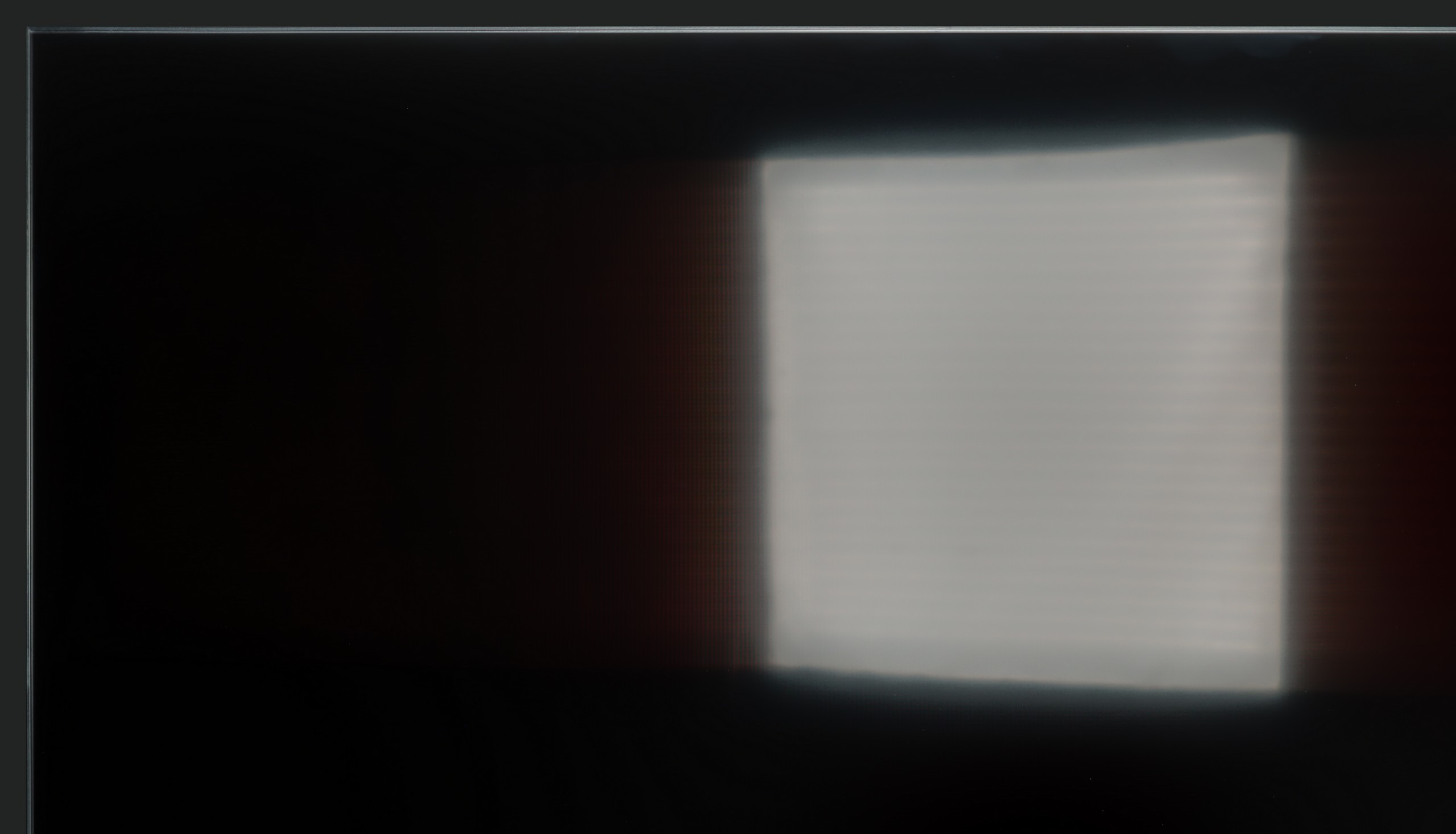
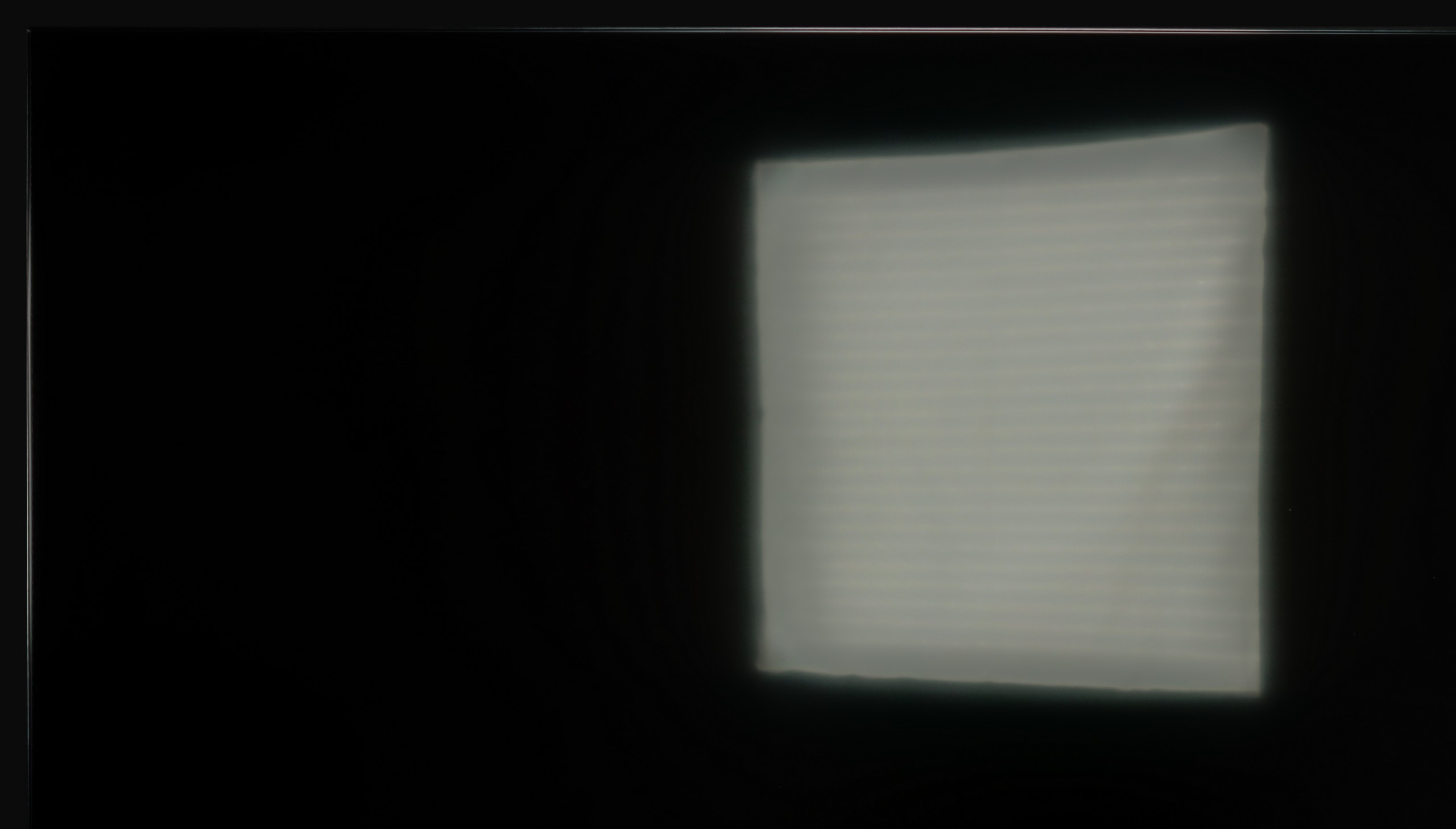


Panel brightness
Average luminance SDR
TCL C7K / QM7K: 475 cd/m2
TCL C6K: 532 cd/m2
TCL C6K performs quite well in bright lighting conditions. The panel offers decent brightness – achieving around 550 nits in SDR content, which allows for comfortable viewing in a moderately lit lounge, even on days with strong light coming through the windows. This means that daytime viewing does not require complete darkening of the room. It's also worth noting that the screen coating does quite a good job of reducing reflections, so the TV doesn't turn into a "mirror" even with bright lighting. However, this is not on the level of top models with more advanced anti-reflective coatings – in very challenging conditions, such as large windows, reflections will be noticeable.
Luckily, the TCL C7K performs quite well in bright rooms. The applied panel has a satin finish that effectively reduces reflections, so even on sunny days we don't have to worry about reflections from lamps or windows. Importantly, the colours maintain their intensity and don't wash out, as can happen with weaker matte panels. As for brightness, the average for content like YouTube or regular television reaches just below 500 nits. It's not a record result – for example, the MQLED85 (C765) performs better in this regard. However, for everyday viewing during the day, it should work without major issues, as long as we don't plan to place it opposite a south-facing window without curtains.
Panel details
Subpixel Structure:
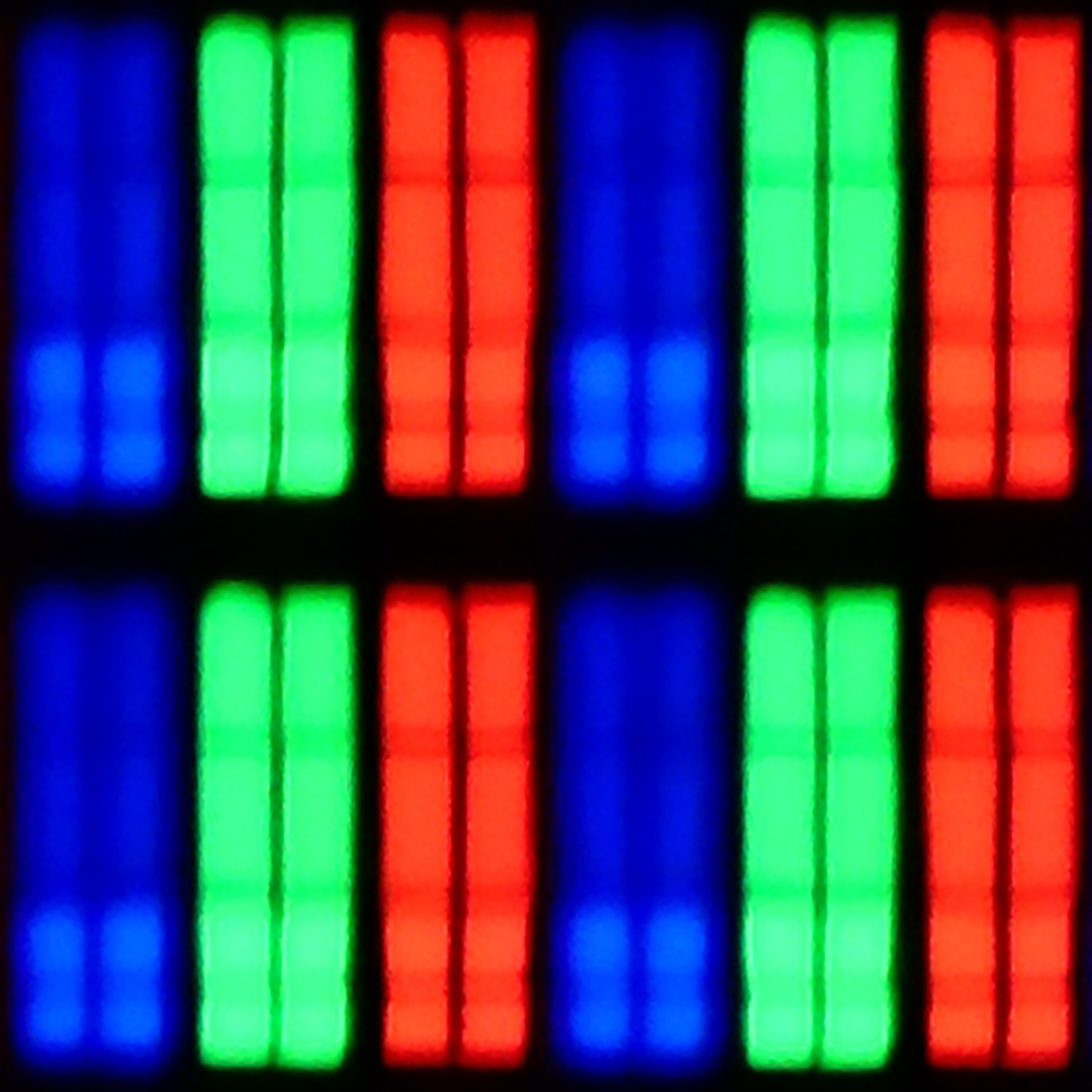
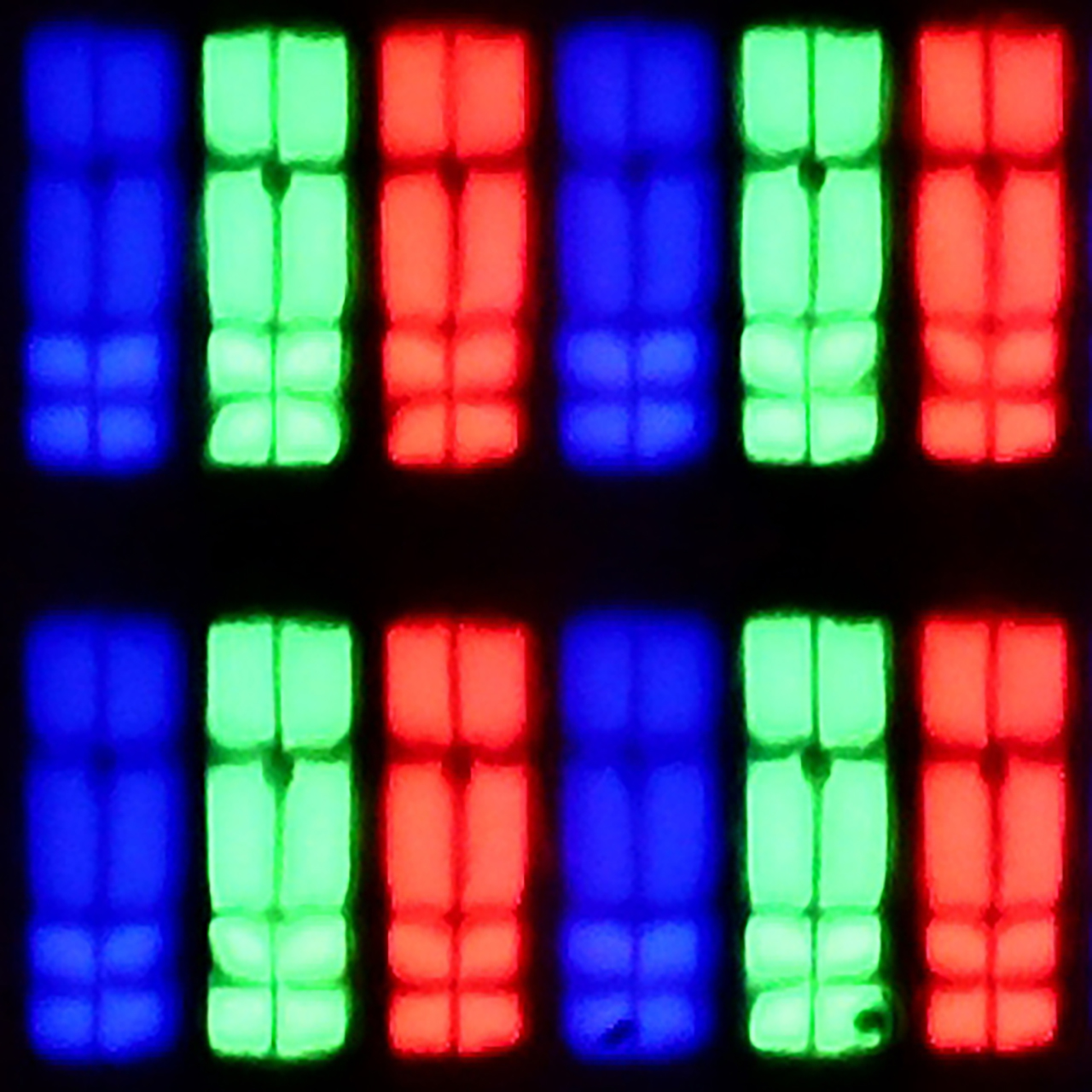
Panel uniformity and thermal imaging:
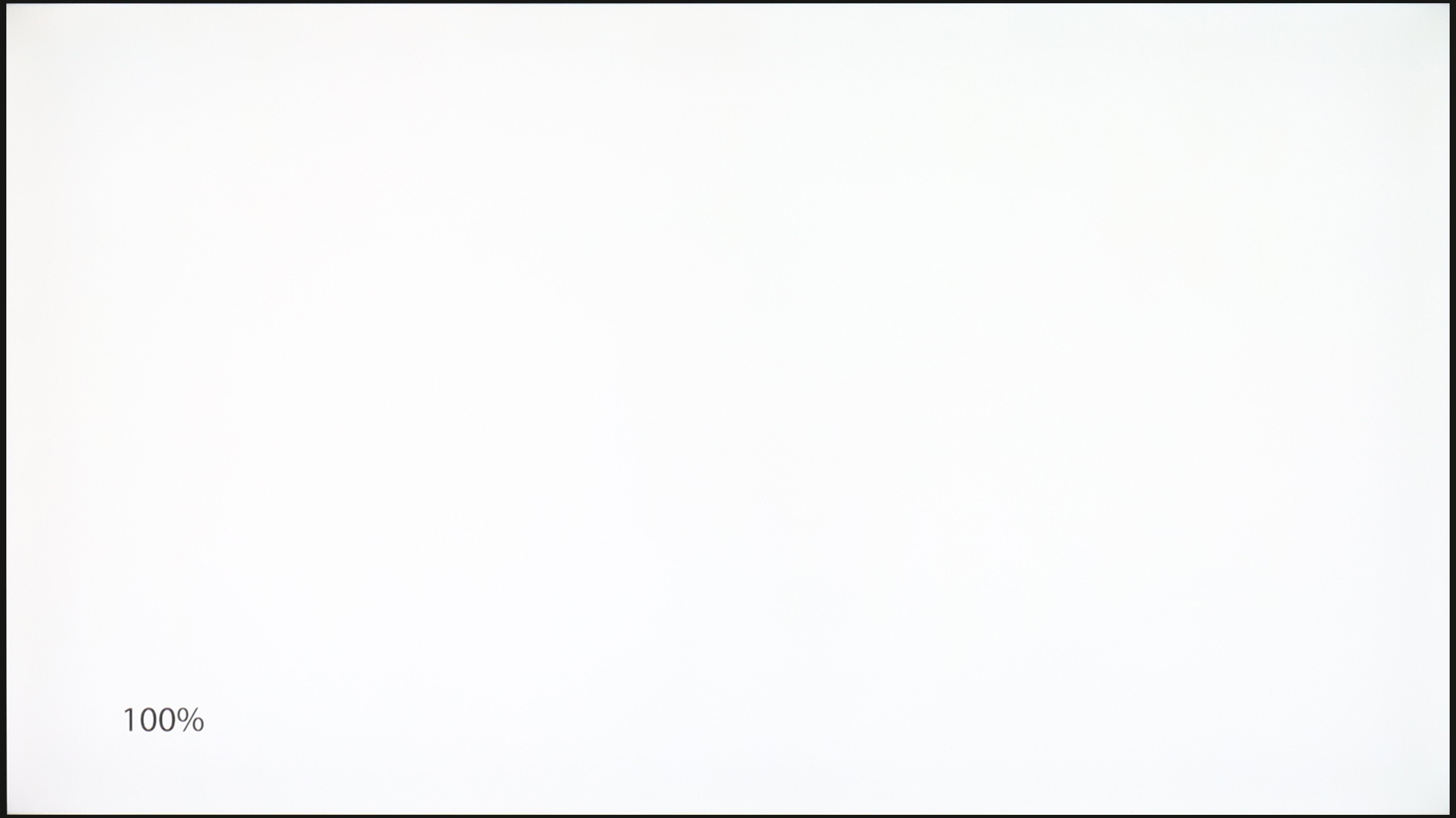
TCL C6K
TCL C7K / QM7K
TV features
7/10
7.3/10
- HDMI inputs2 x HDMI 2.0, 2 x HDMI 2.1 48Gbps2 x HDMI 2.0, 2 x HDMI 2.1 48Gbps
- OutputsToslink (Optical audio), eARC (HDMI), ARC (HDMI)Toslink (Optical audio), eARC (HDMI), ARC (HDMI)
- Network InterfacesWi-Fi 2.4GHz, Wi-Fi 5GHz, Ethernet (LAN) 100MbpsWi-Fi 2.4GHz, Wi-Fi 5GHz, Ethernet (LAN) 100Mbps
- TV receptionDVB-T, DVB-T2, DVB-S, DVB-S2, DVB-CDVB-T, DVB-T2, DVB-S, DVB-S2, DVB-C
Classic features:
- Recording to USB (terrestrial TV)
- Recording programming
- Picture in Picture (PiP)
- RF remote control (no need to aim at the screen)
- Backlit remote control
- Teletext
- Audio only mode
- Bluetooth headphones support
- Simultaneous Bluetooth headphones & TV audio
Smart features:
- AirPlay
- Screen mirroring (Windows Miracast)
- Voice search
- Voice search in native language
- Ability to connect a keyboard and mouse
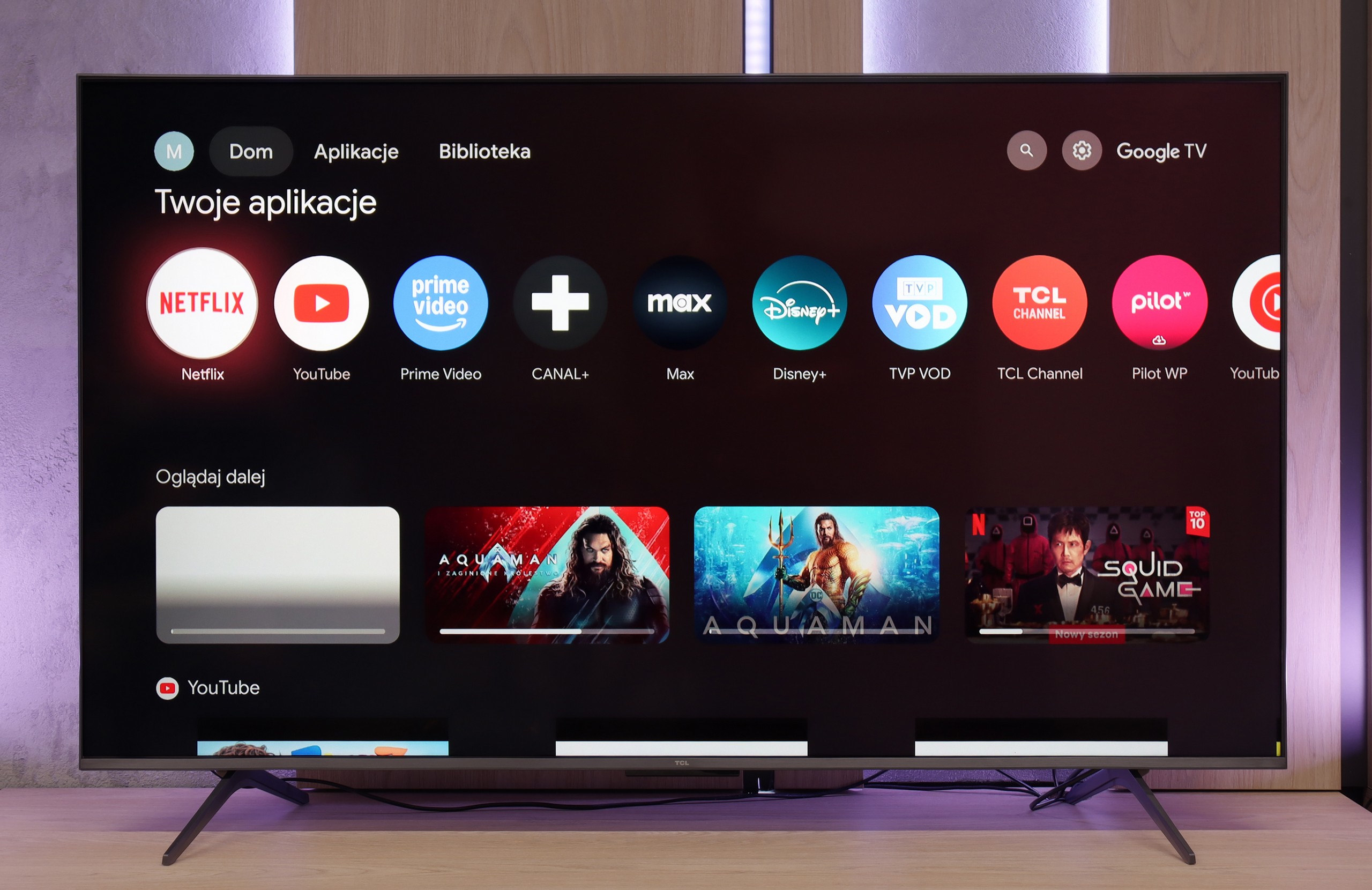
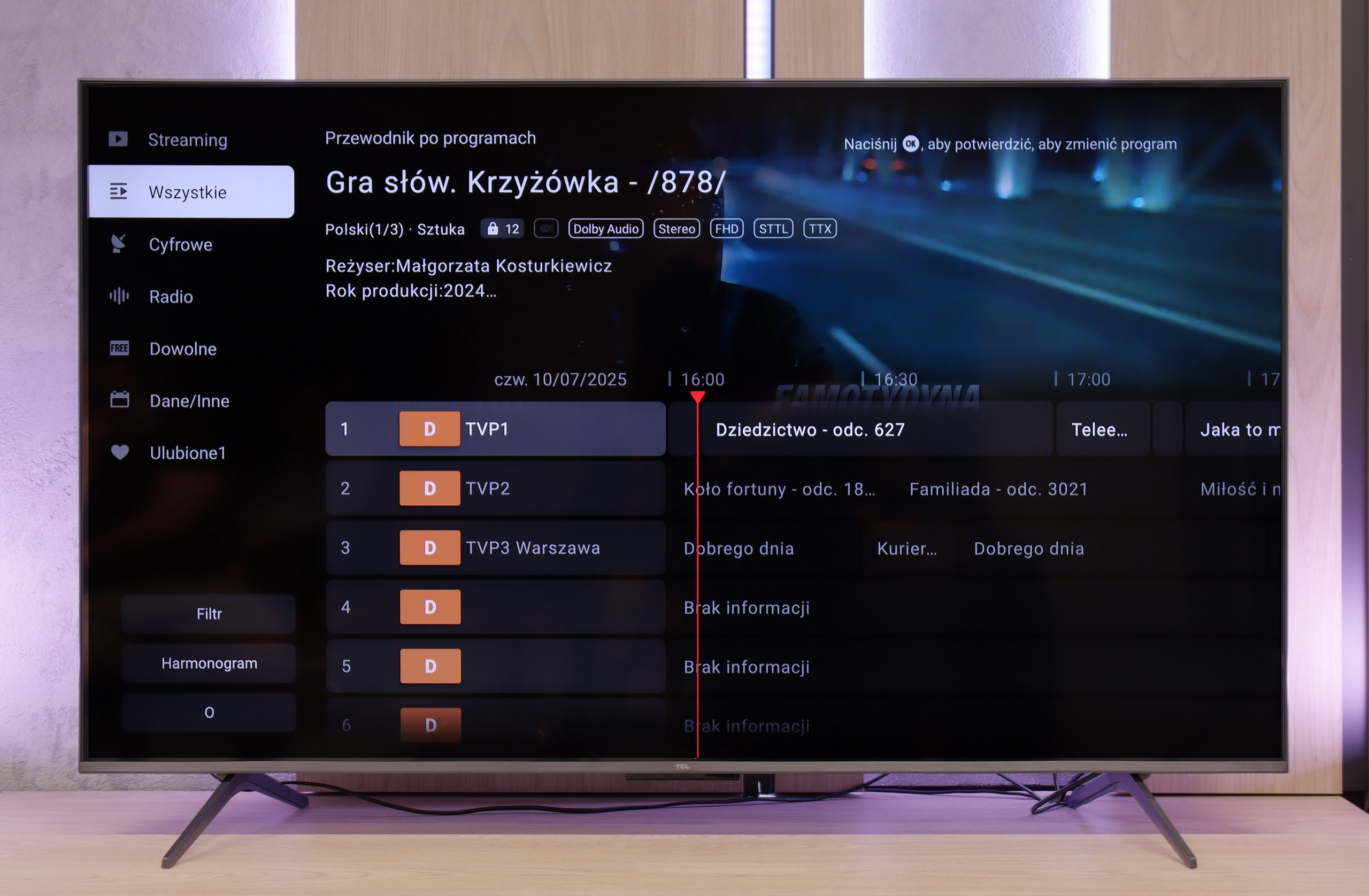
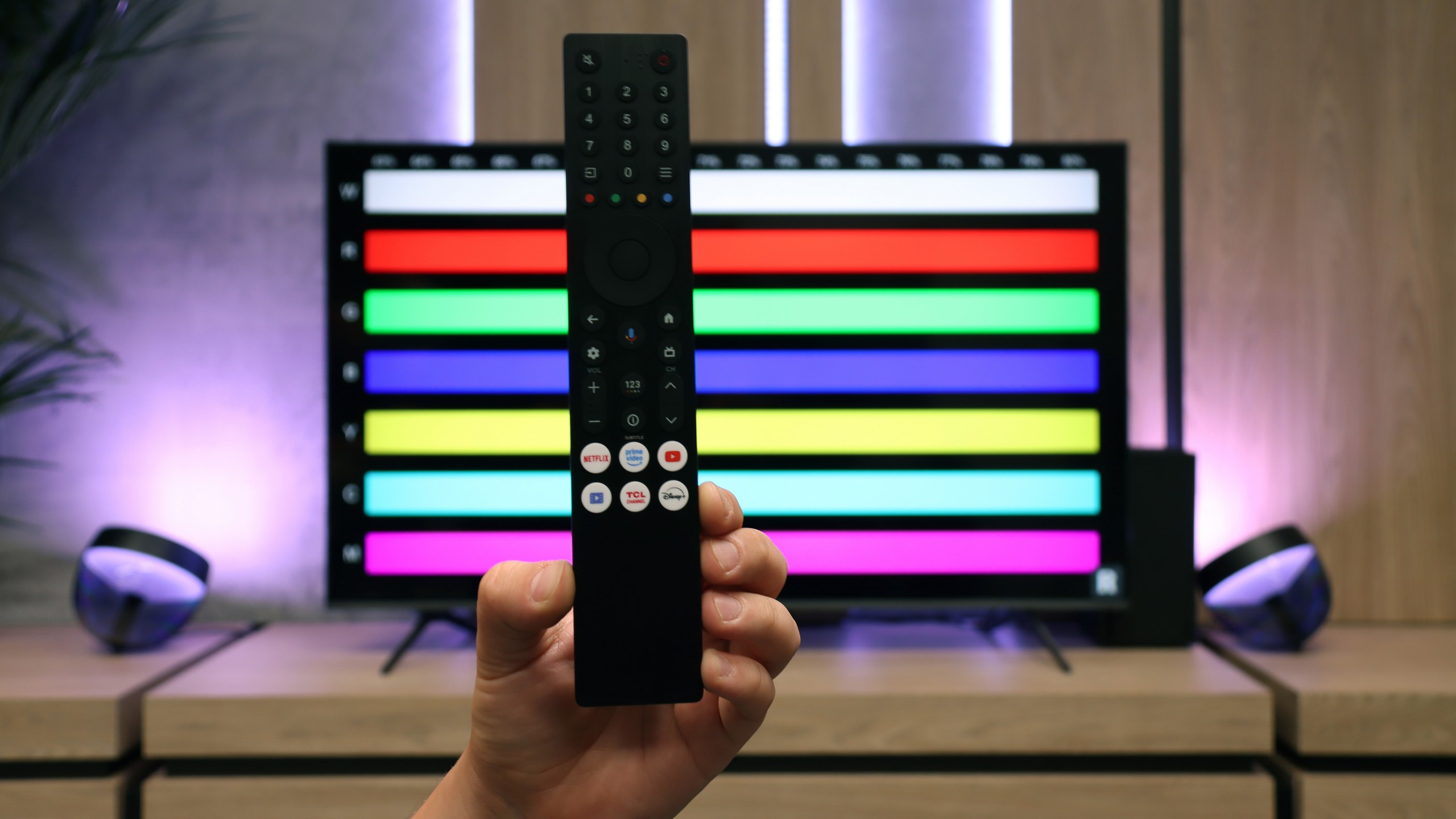
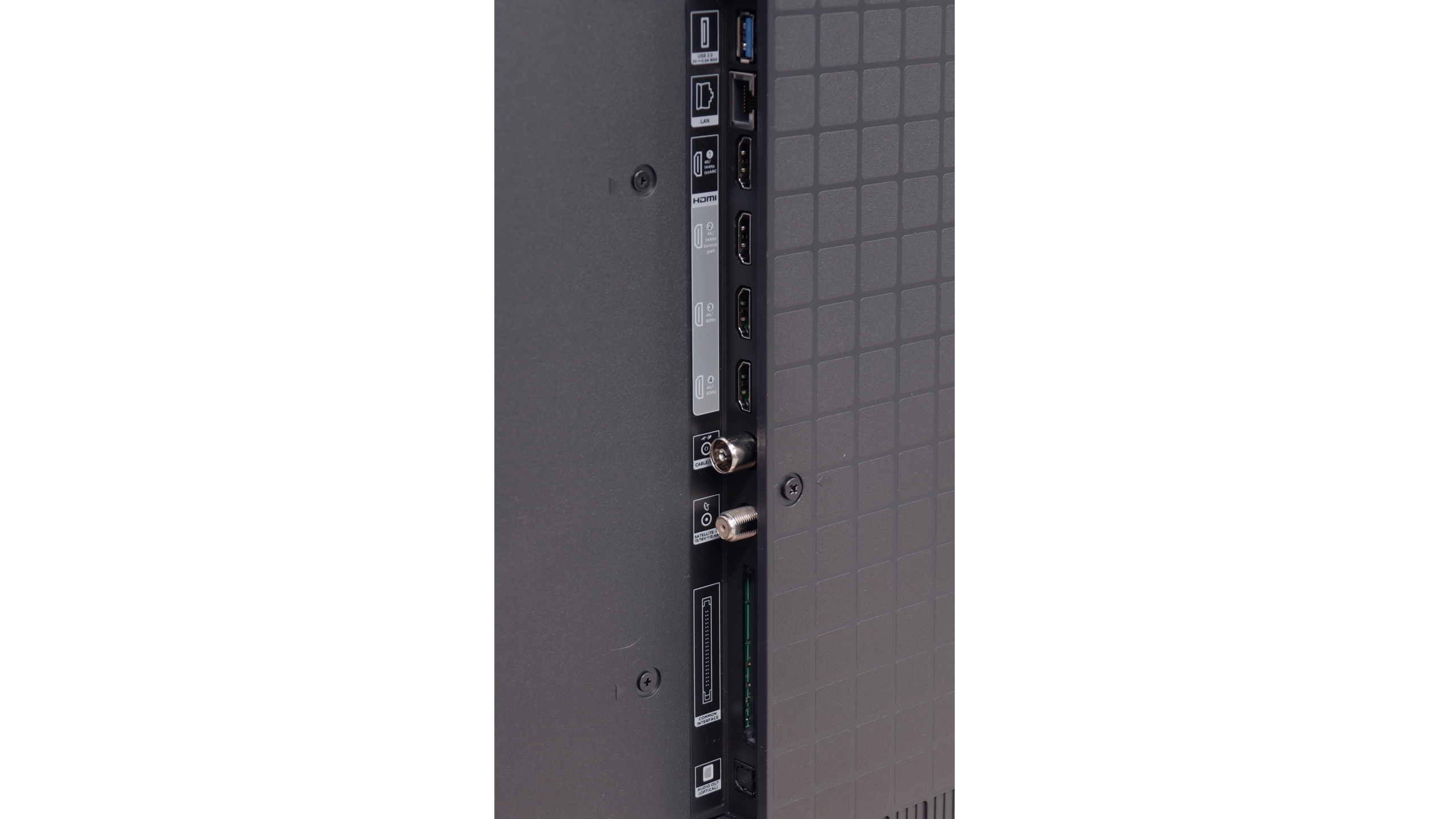
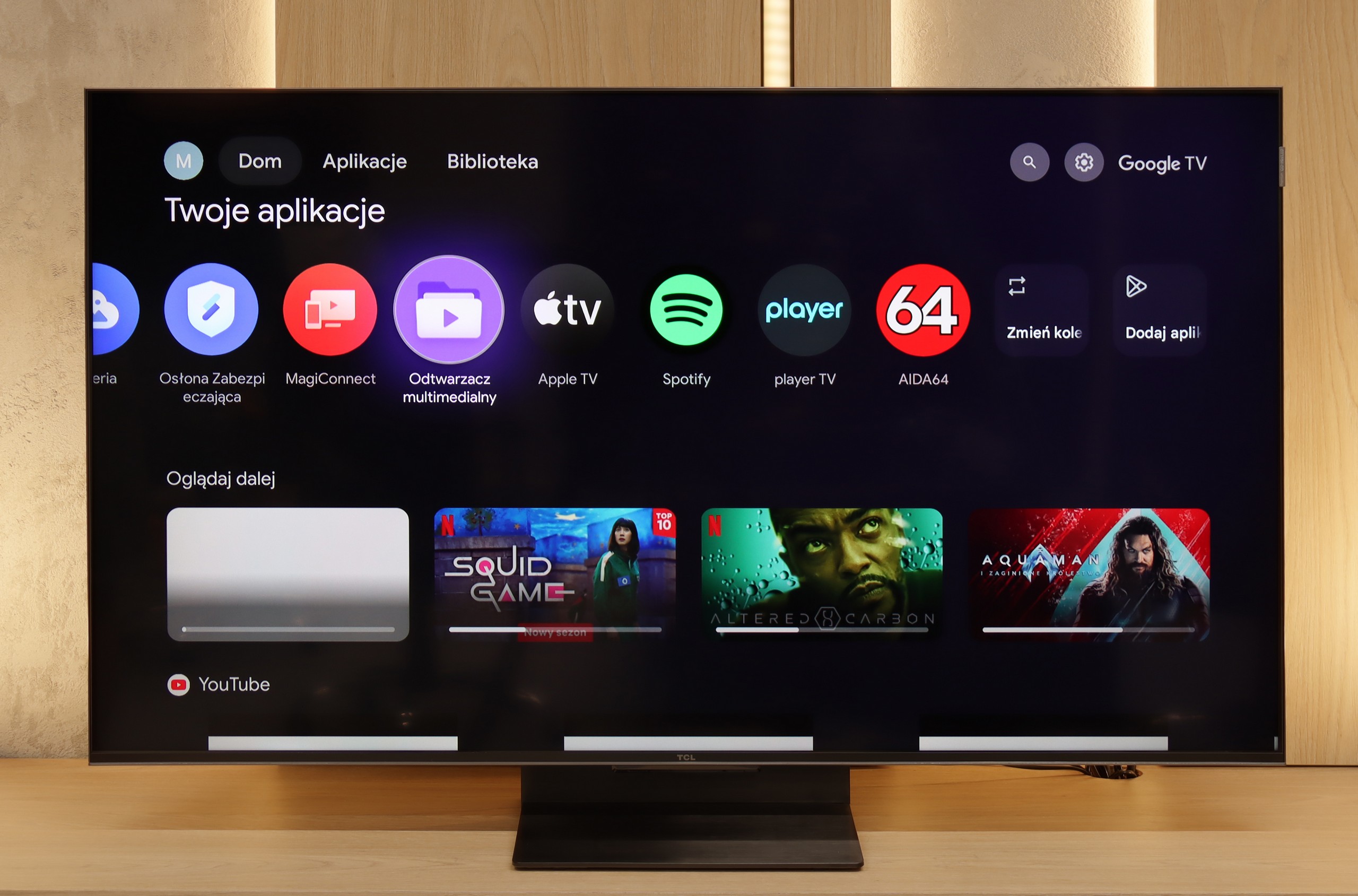
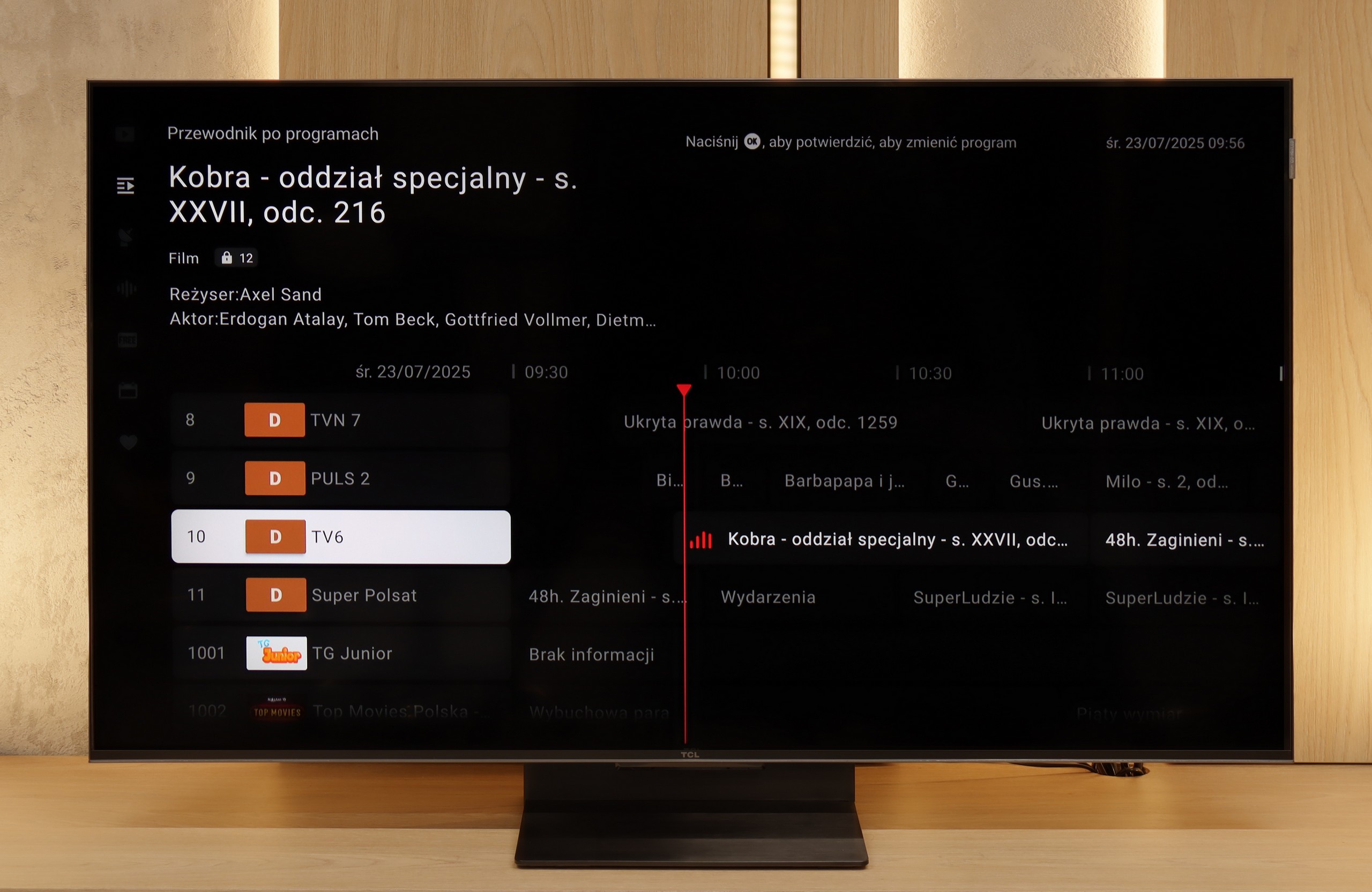
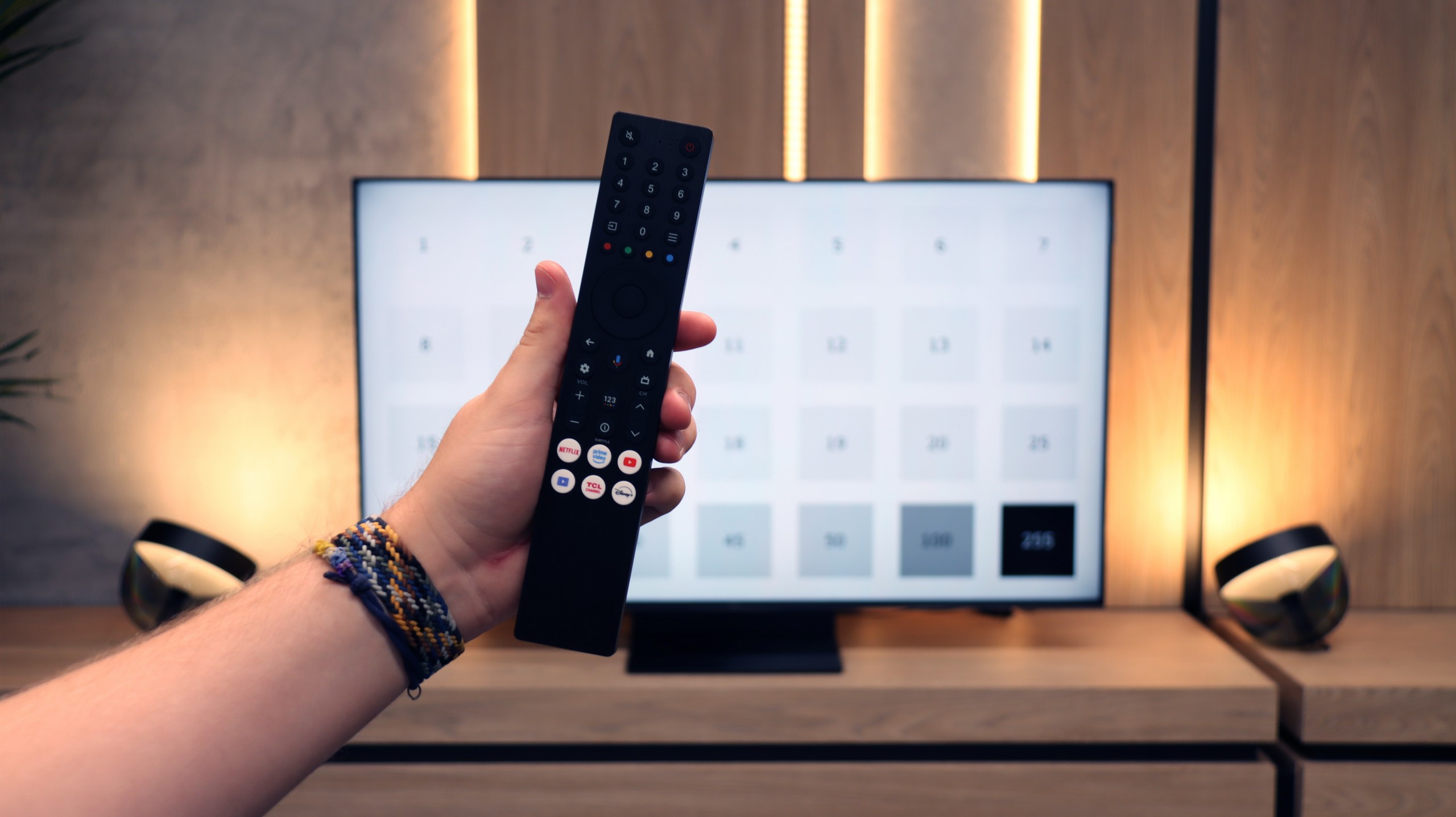
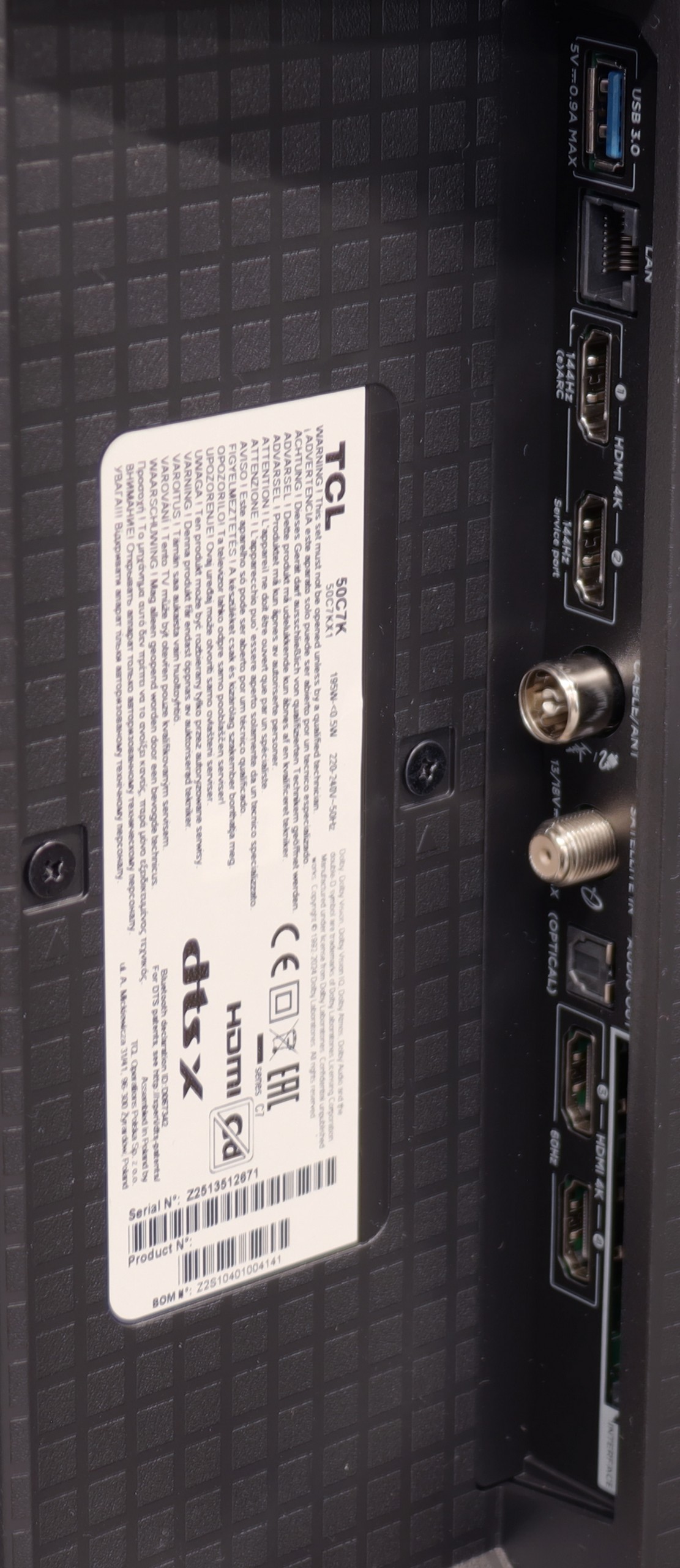
Multimedia Features: Google TV
The standout feature of the TCL C6K is undoubtedly the Google TV system. It gives the television its character and gives it an edge over many competitors. We have a full suite of services – from support for popular streaming apps, through screen mirroring support, to AirPlay, so iPhone users will feel right at home. Additionally, there's Google Assistant (now in the Gemini AI version), which not only answers questions but also efficiently carries out simple commands like changing channels or searching for content on VOD services. The system itself operates quite responsively, although it’s hard not to mention a certain drawback – the clumsy translations in the Polish menu can elicit a smile but sometimes require a moment of thought to decipher what’s really meant.
Classic Features
When it comes to classic television features, the TCL C6K is rather average. We won’t find USB recording or PiP mode, which may be disappointing for some. However, the manufacturer hasn’t forgotten the basics – teletext television and a clear EPG are available, which still hold significance for some users. In everyday use, support for external audio devices via Bluetooth comes in handy – a straightforward way to connect a speaker or headphones, which could be a practical solution for seniors. Beyond that, it’s hard to spot elements that would distinguish the C6K from its competitors – it’s simply a solid, but standard package of basic features.
SmartTV: GoogleTV
The biggest strength of the TCL C7K in everyday use is undoubtedly the Google TV system. It is thanks to this that we have access to an almost endless library of applications, including some more niche ones that are often unavailable on other platforms. The built-in Google Assistant understands Polish, so we can easily ask what is on TV, what the weather is like, and even give a few voice commands to control the television. The presence of Chromecast and AirPlay, which work smoothly and make life easier, is also a plus.
Usability Features
However, the traditional functions are a bit lacking. Of course, we have the basics – teletext, EPG, or the ability to connect headphones – but that’s pretty much where it ends. There's a lack of USB recording features or picture-in-picture (PiP) mode, which can still be found among competitors. It's also worth remembering that Google TV in the TCL version sometimes has strangely translated menu sections or minor interface errors. These aren’t issues that hinder daily use, but detail-oriented individuals may notice them.
Playing files from USB
8.9/10
9.2/10
Supported photo formats:
Maximum photo resolution:
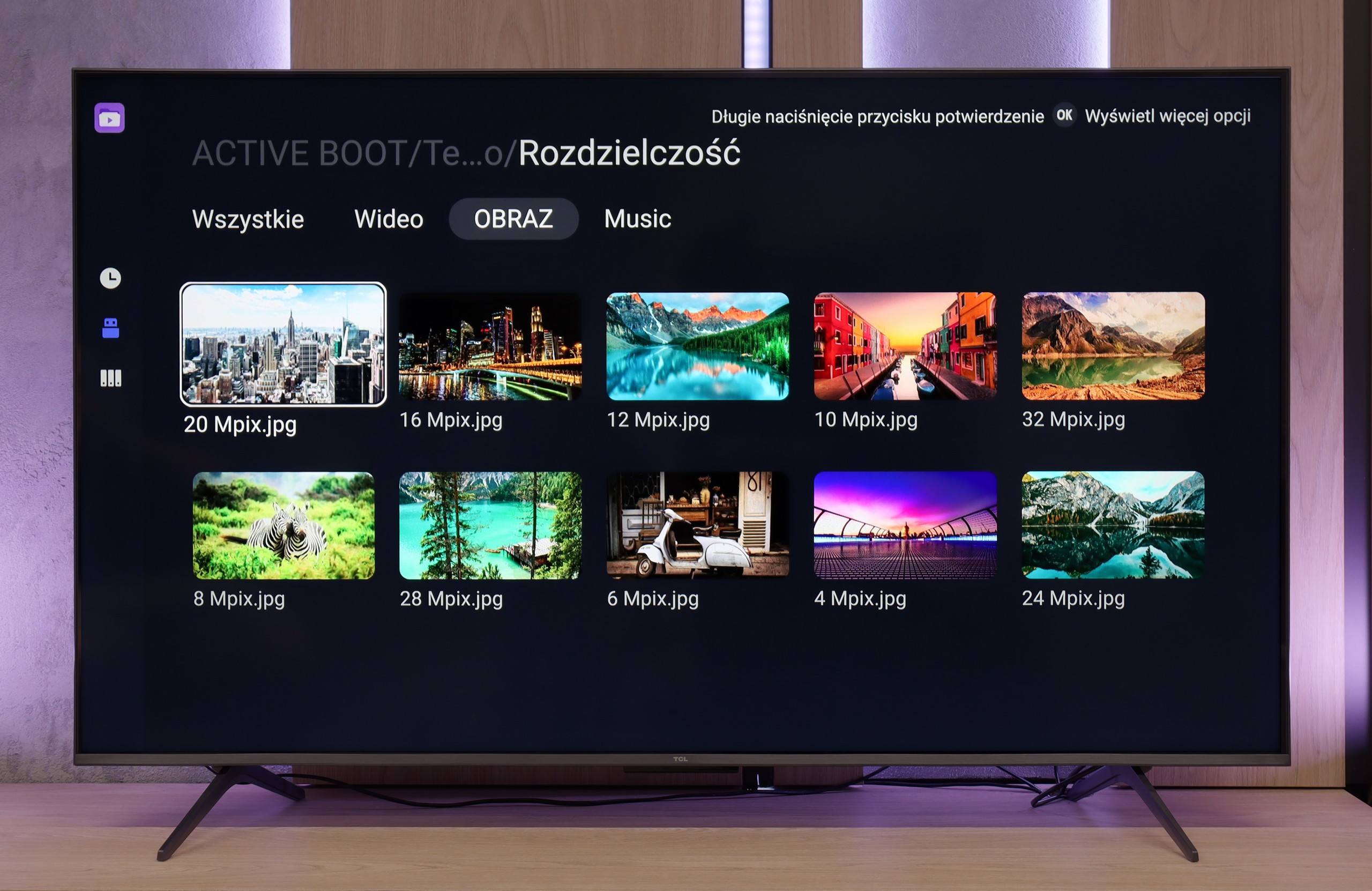
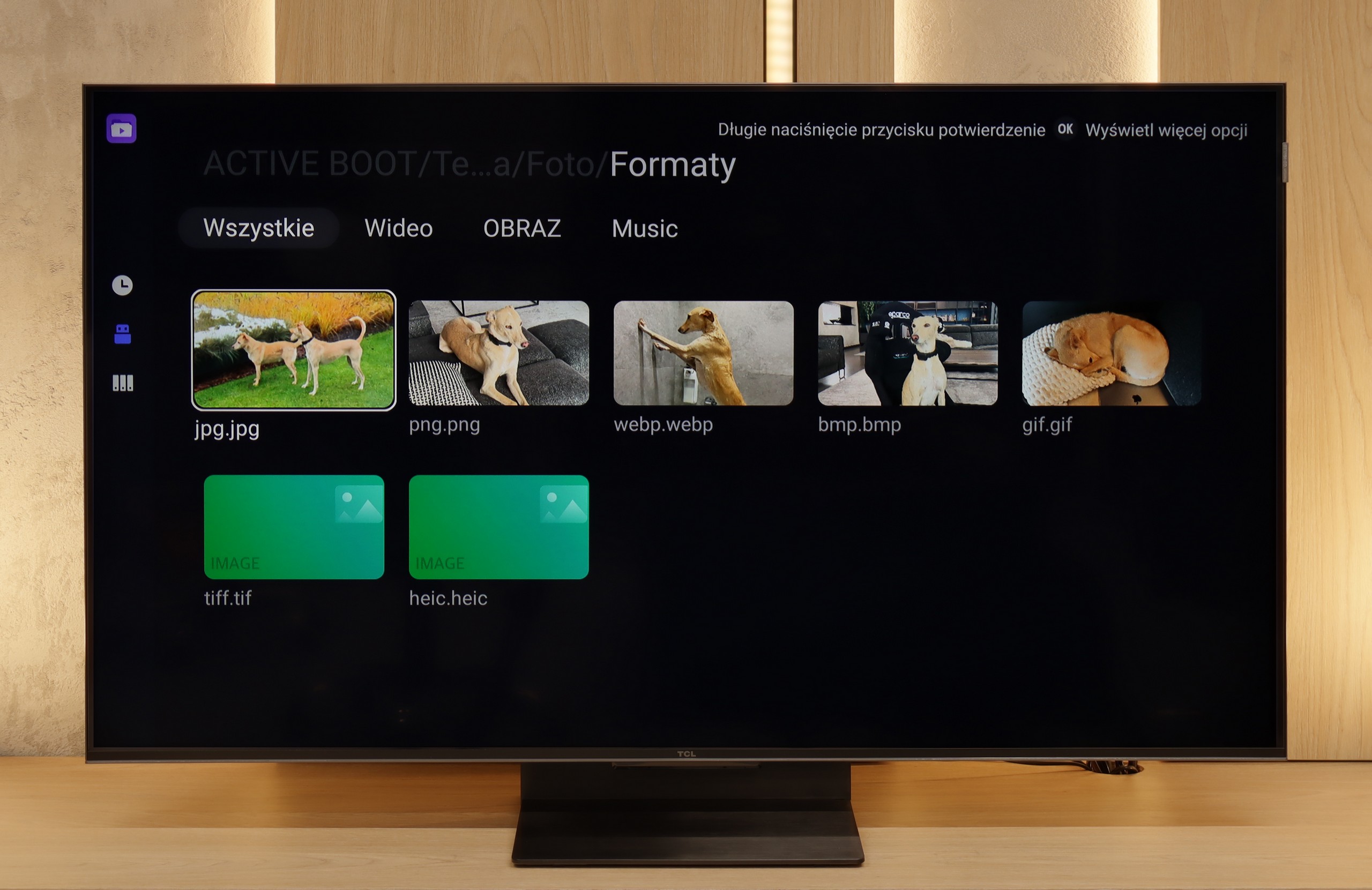
The built-in media player in the TCL C6K performs really well – practically all popular file formats work without major issues. There are minor exceptions, particularly with less common codecs or unusual video file configurations, but in everyday use, this rarely becomes noticeable. The biggest plus, however, is that the television runs on Google TV, which offers complete freedom in choosing additional software. If someone encounters a file that the standard player can't handle, all they need to do is install an alternative – like VLC – and the problem disappears.
The built-in file player in the TCL C7K performs really well. It supports most popular audio and video formats, so if we want to quickly plug in something from a USB drive and get it going – there shouldn't be any problem. Of course, as is often the case, you can find some minor shortcomings – not every exotic codec will work (Apple's HEIC), not all subtitles will be perfectly synchronised (txt.). However, the biggest advantage of this television comes to the rescue, which is Google TV. With access to the Google Play Store, we can easily install an alternative player, such as VLC, and then no files will frighten us.
Apps
9.6/10
9.6/10














































Sound
6.5/10
7/10
- Maximum volume-76dB
- Dolby Digital Plus 7.1
- Dolby True HD 7.1
- Dolby Atmos in Dolby Digital Plus (JOC)
- Dolby Atmos in Dolby True HD
- DTS:X in DTS-HD MA
- DTS-HD Master Audio
In terms of audio, the TCL C6K performs quite well. The manufacturer has been boasting about its collaboration with the Onkyo brand for several years, and it indeed reflects on the sound quality. The sound is pleasant, with clear mid-tones and fairly crisp highs, and overall, it gives the impression of being well-balanced. Of course, it won't replace a proper soundbar, especially regarding bass depth, but for built-in speakers in a TV from this price segment – it’s really quite good.
To be honest, we didn't expect much from the sound of the 50-inch version of the C7K model. Usually, in such sizes, it's hard to find anything more than thin, flat sound. But here – a pleasant surprise. The sound turned out to be really enjoyable, with good clarity and even a subtly noticeable bass. This is probably linked to TCL's new collaboration with the Bang & Olufsen brand, which is a novelty for 2025. Whether the C7K actually contains original drivers from the Danish premium brand – we can't confirm that. But the end result still deserves a thumbs up. For a TV without a soundbar – it sounds quite nice.
Acoustic Measurements
No acoustic data
76dBC (Max)
75dBC
